VERY RARE! WWI August 1918 Battle of Saint-Mihiel U.S. First Army "E. Company" A.E.F. Western Front Trench Map
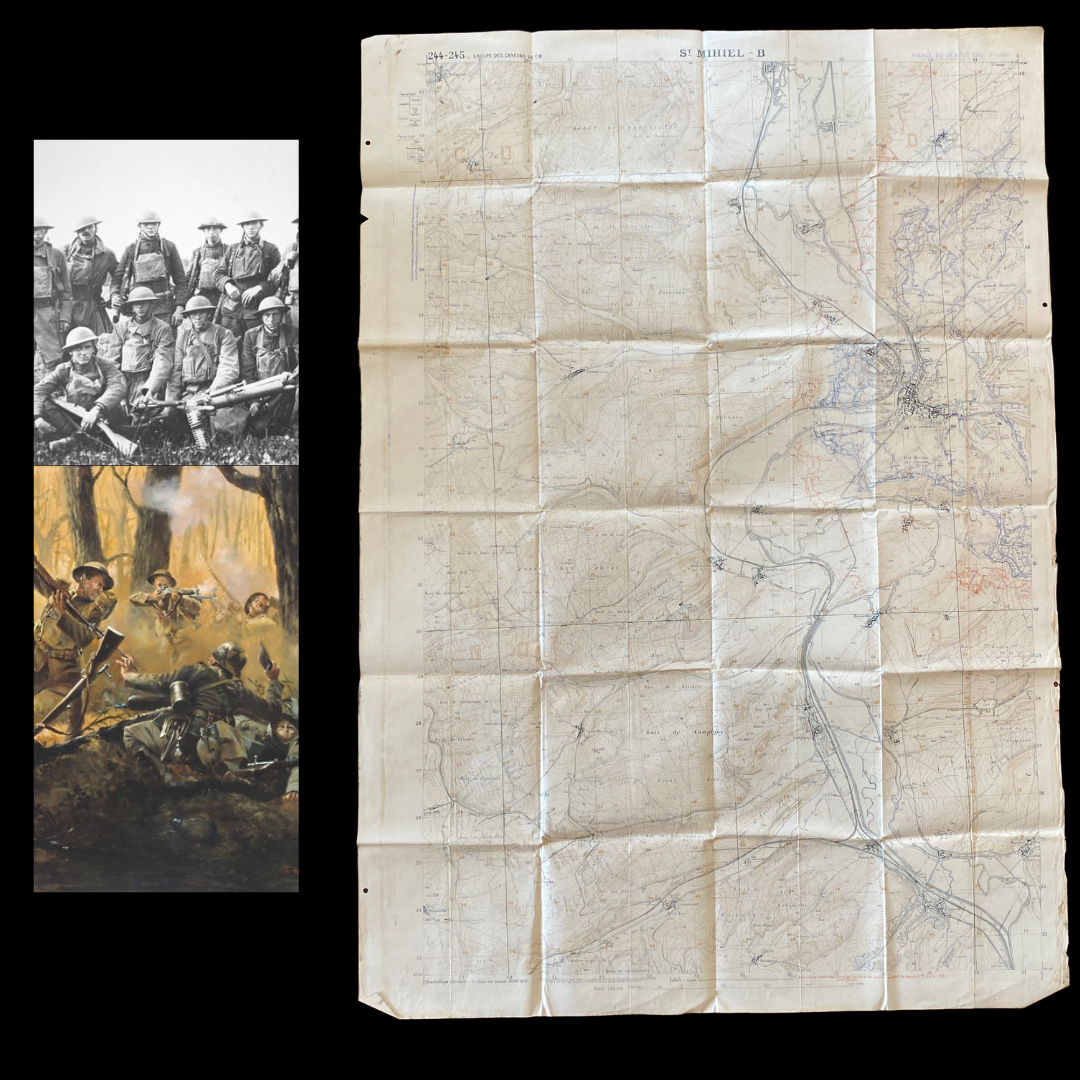
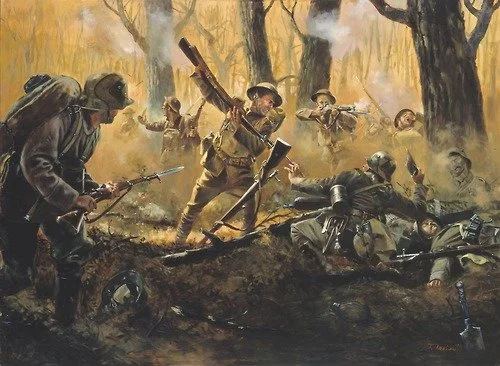
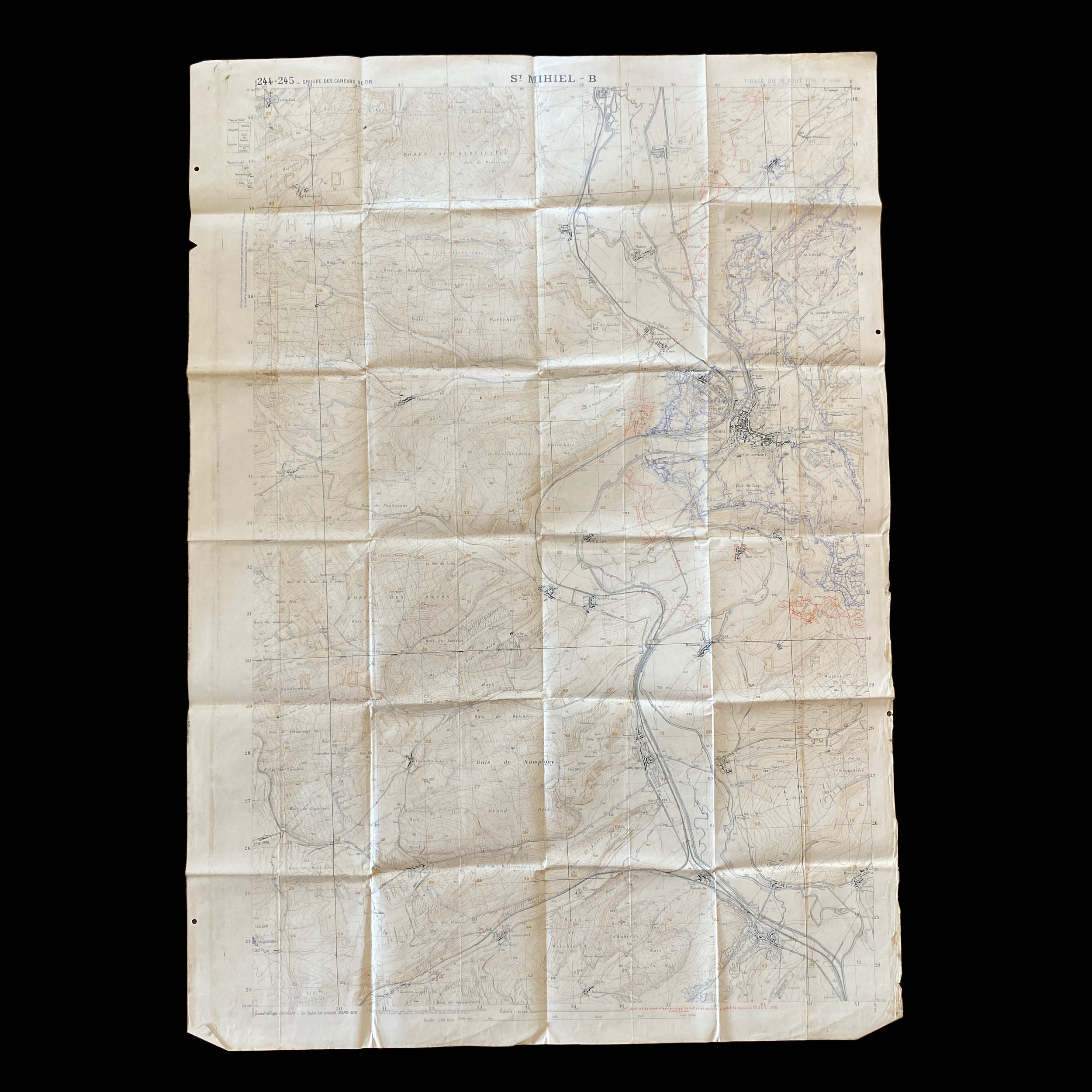
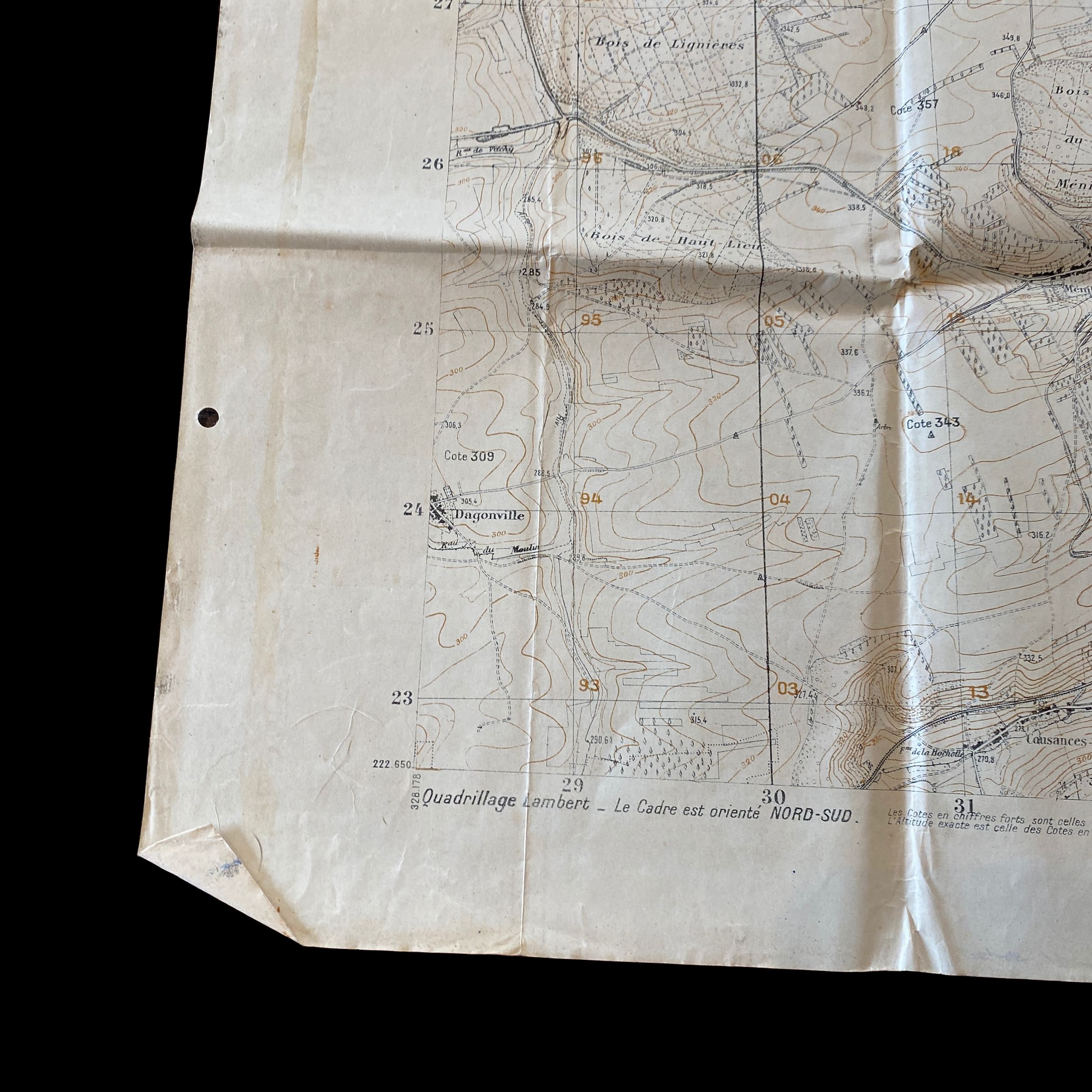
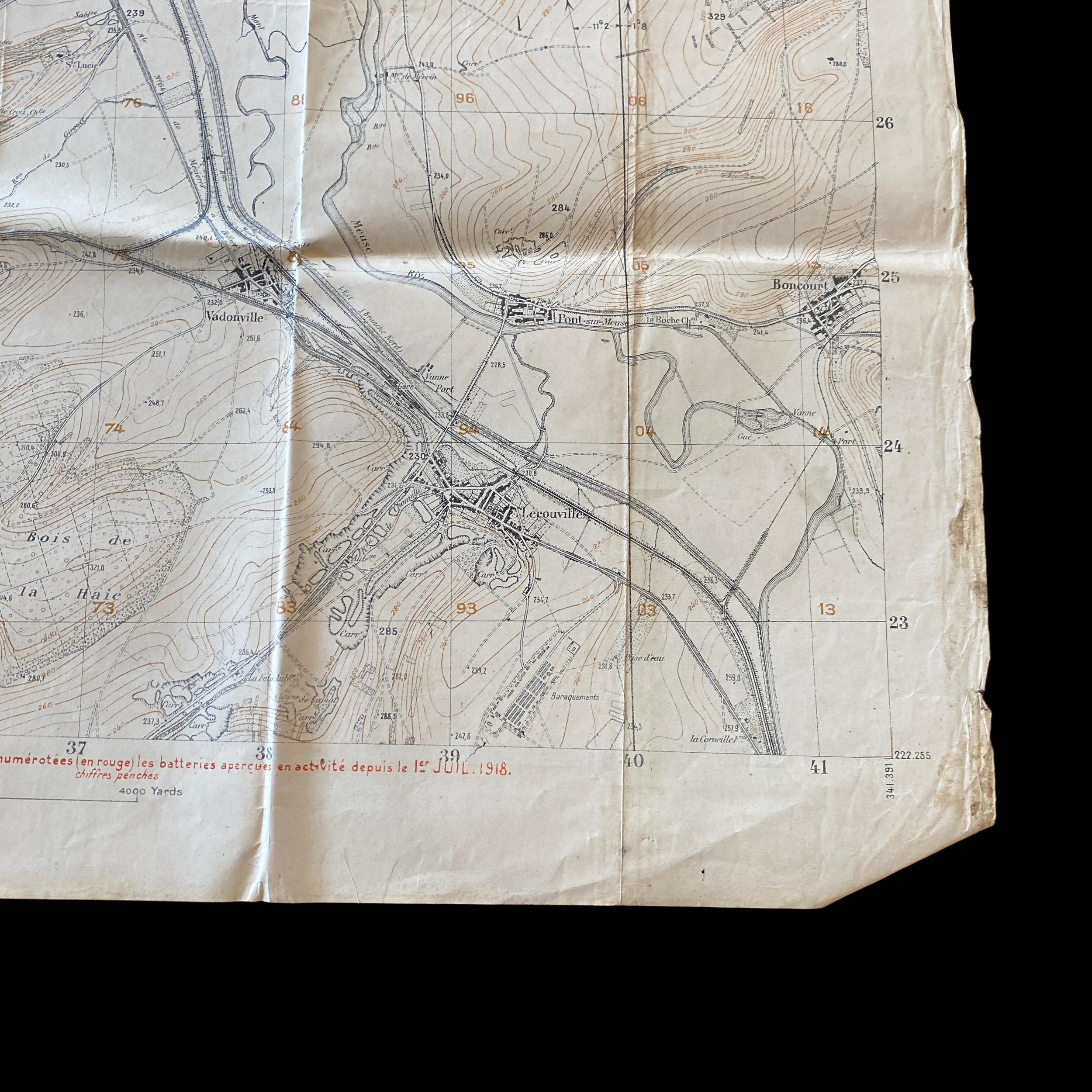


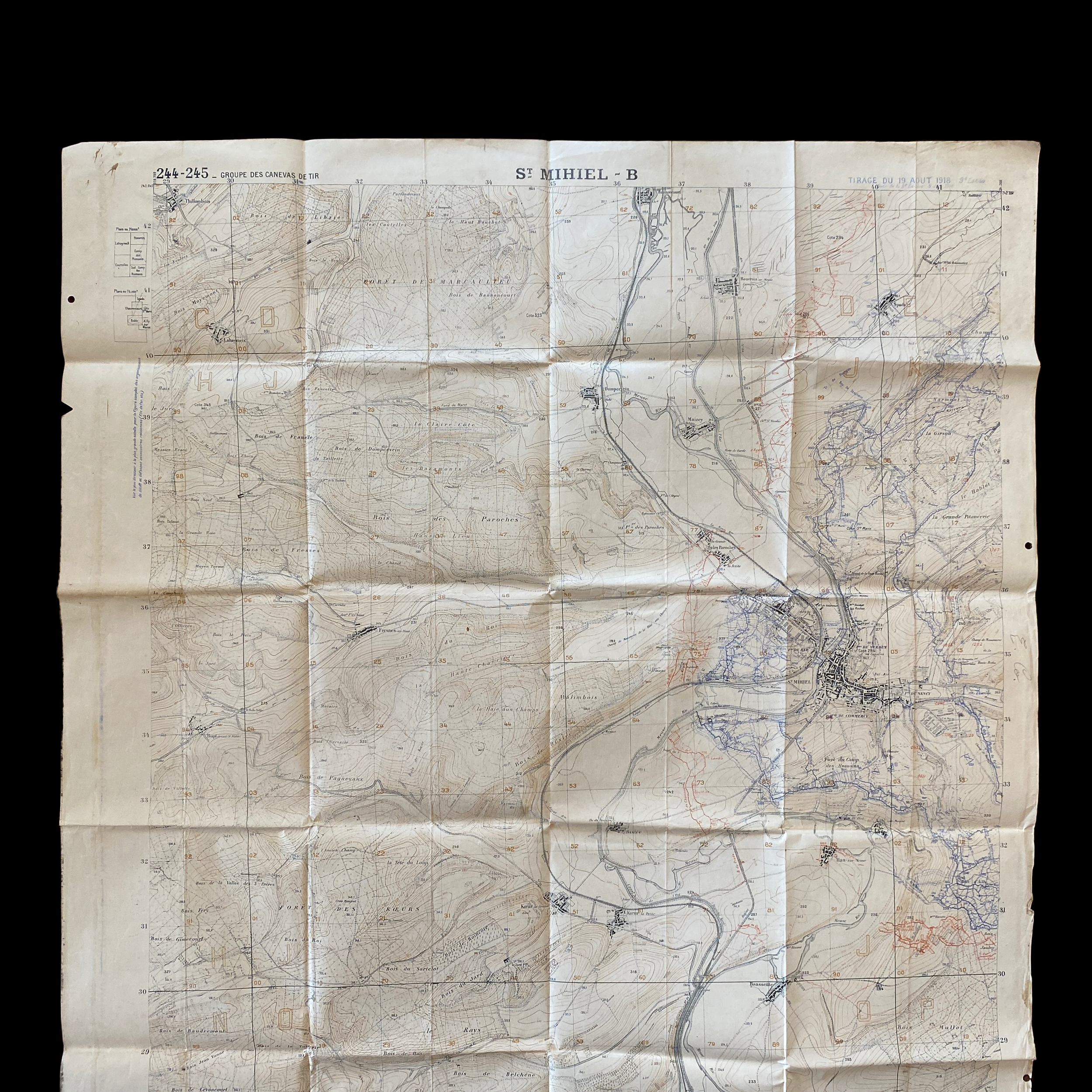
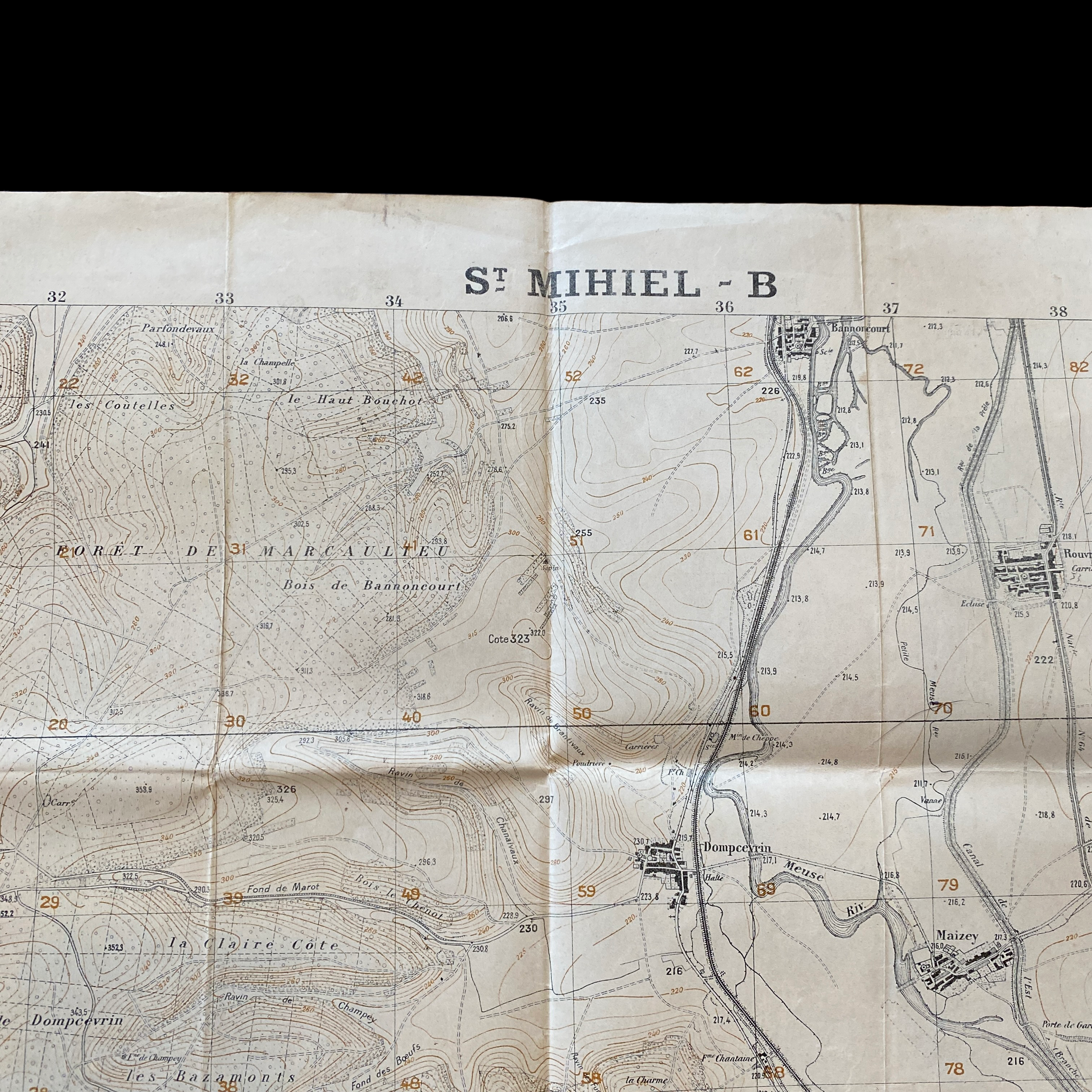

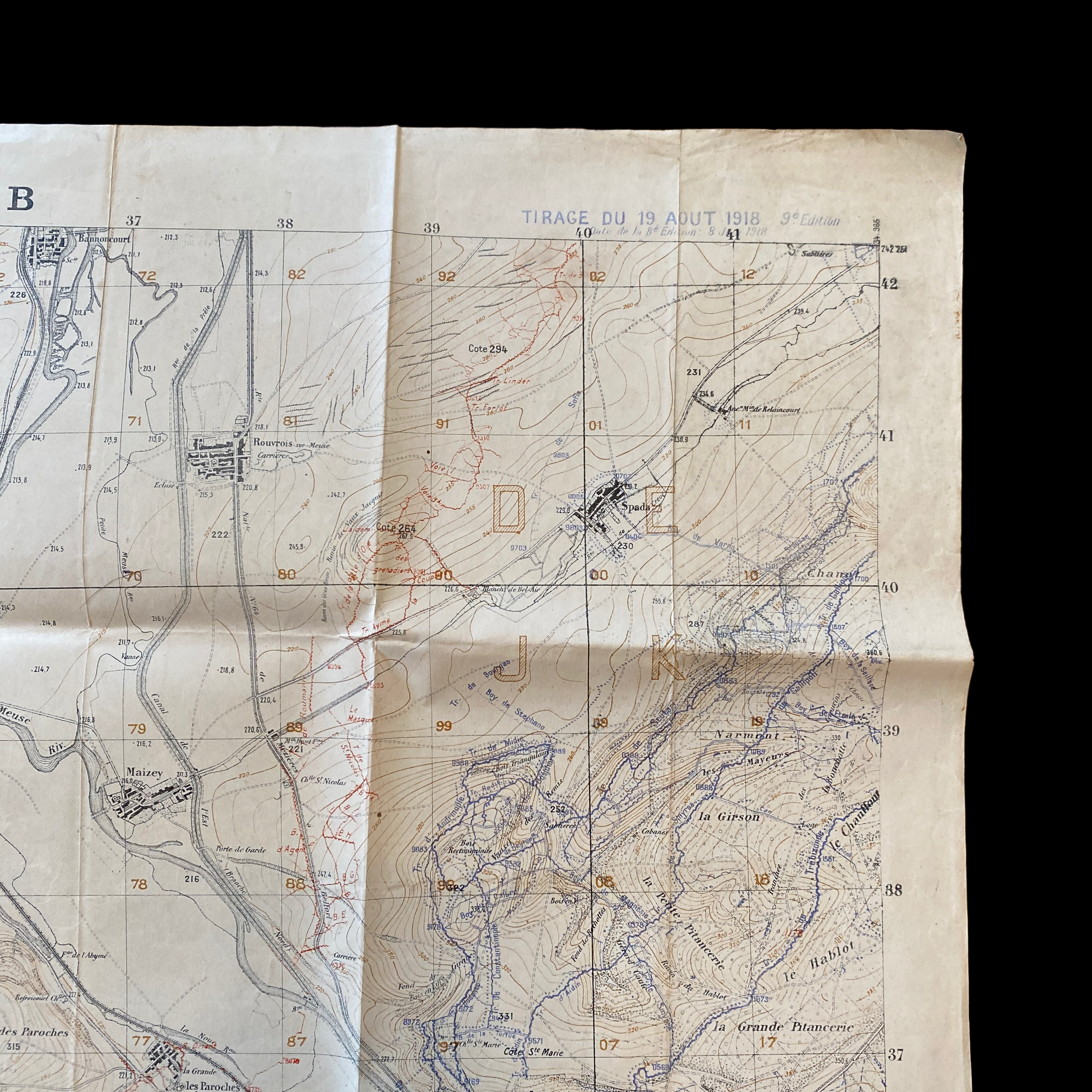
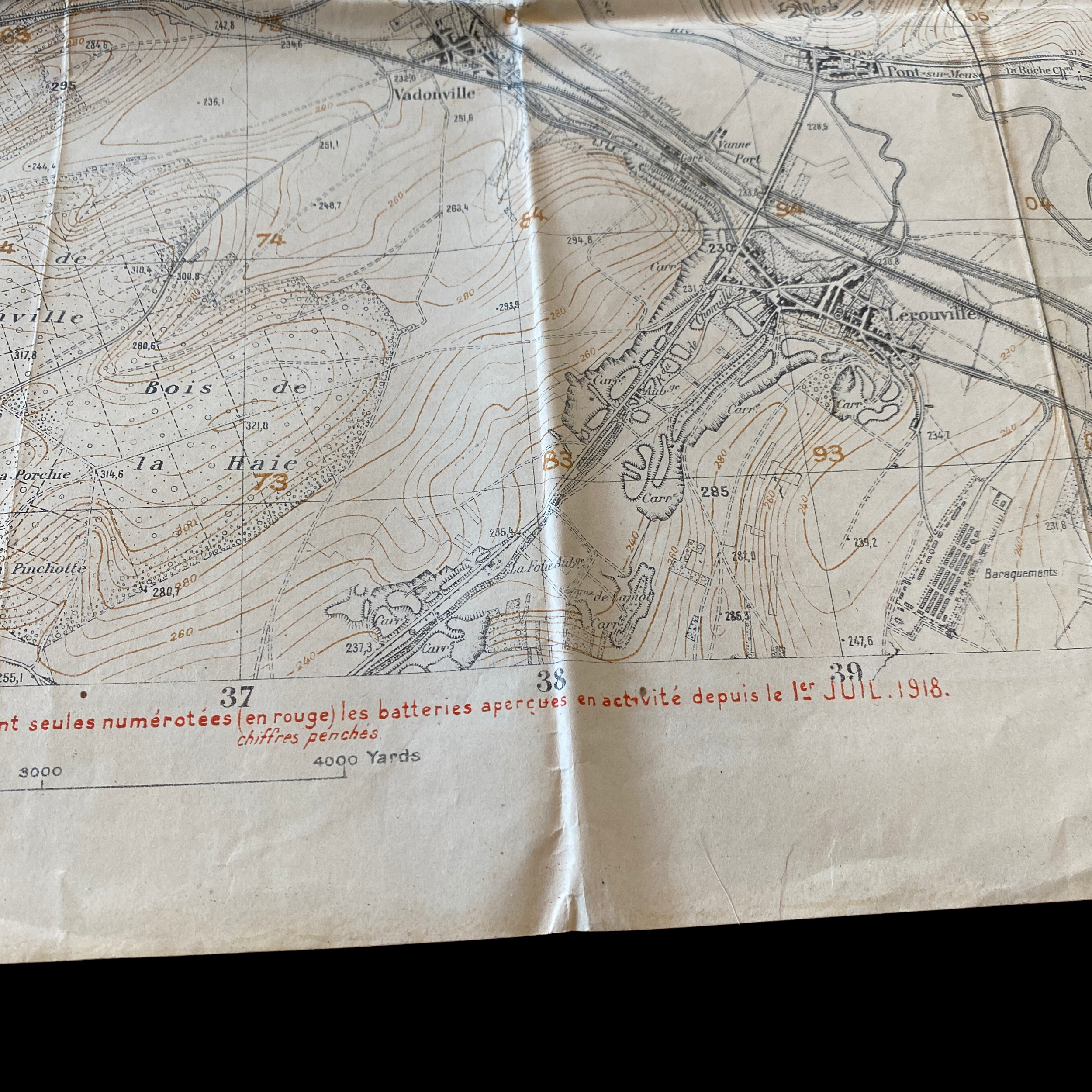
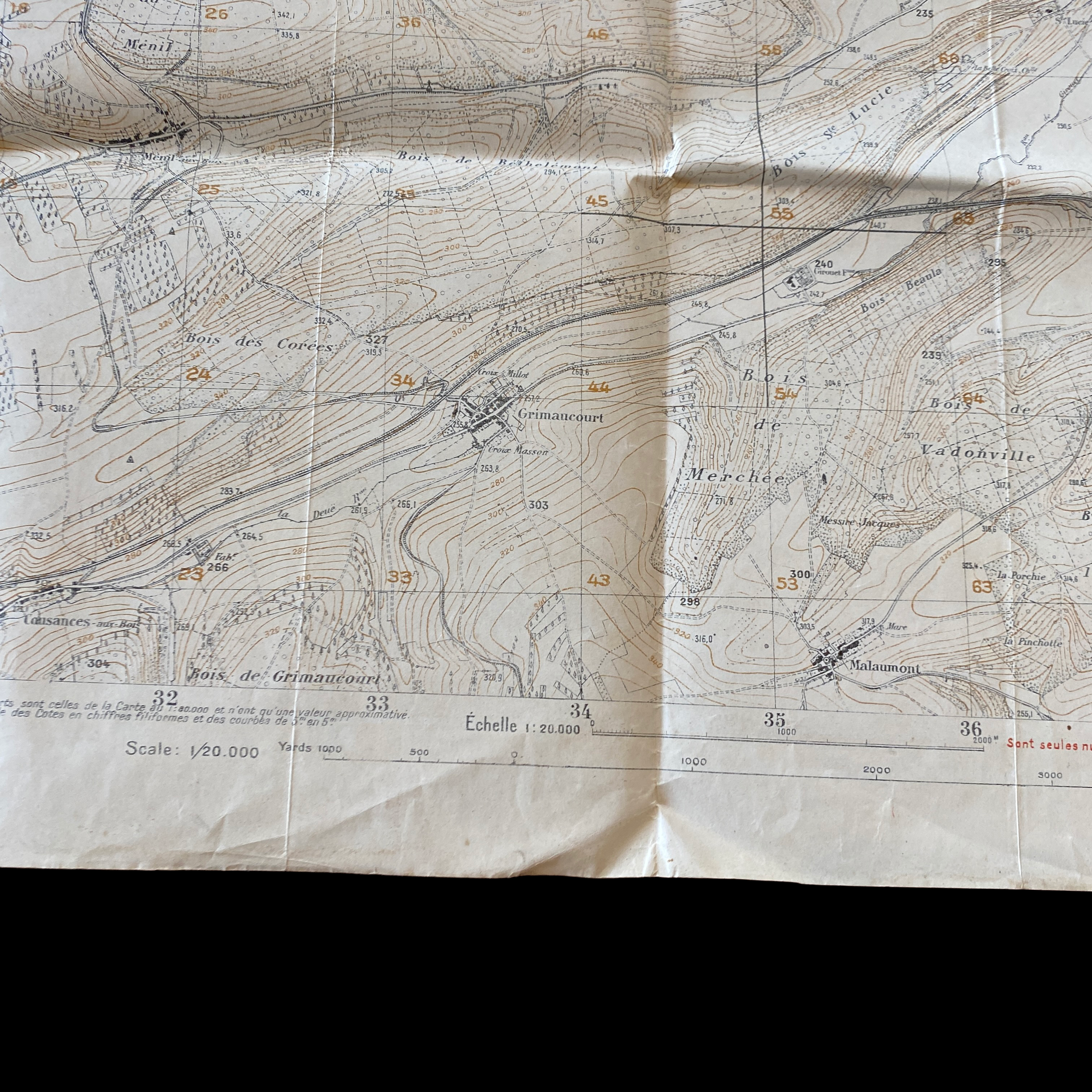
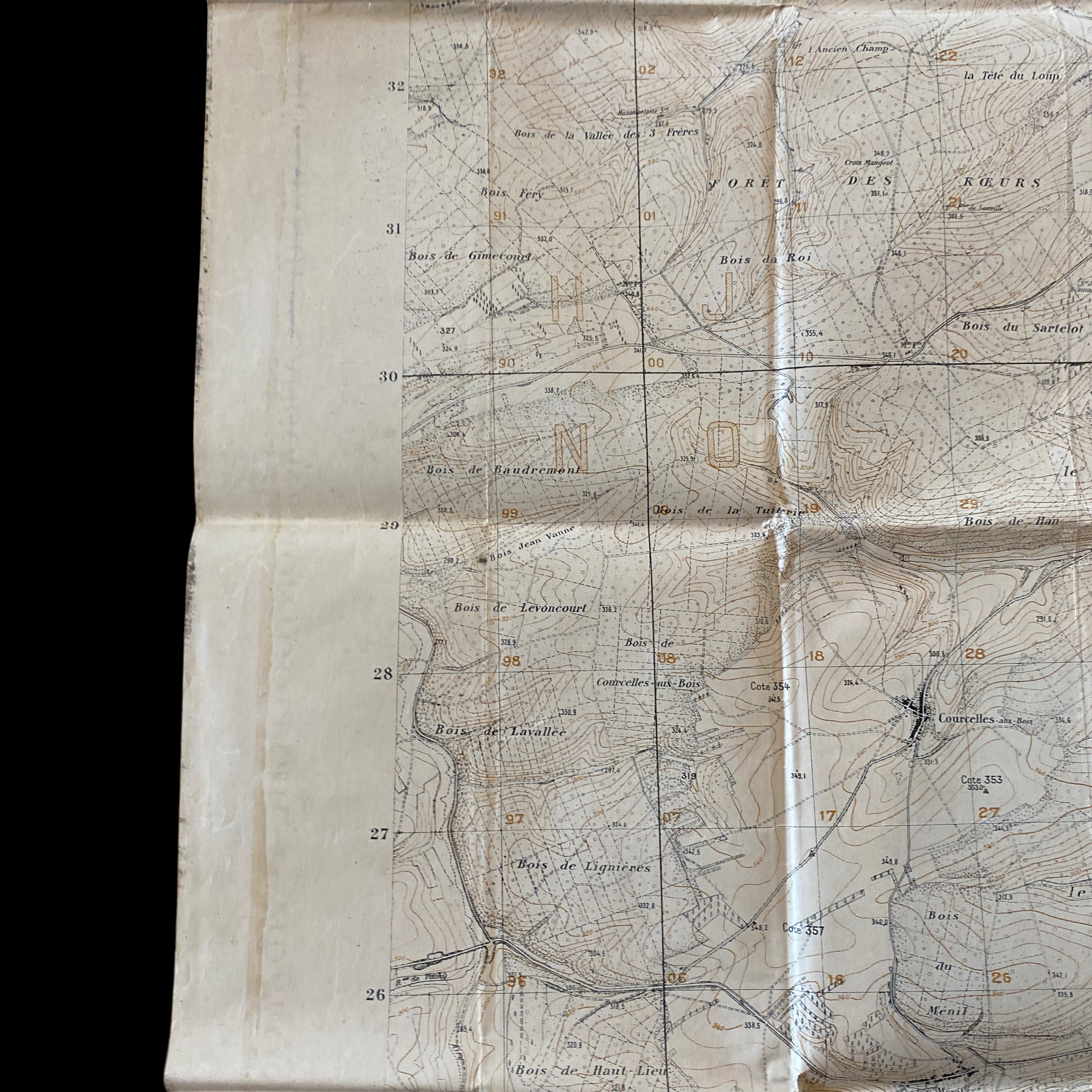
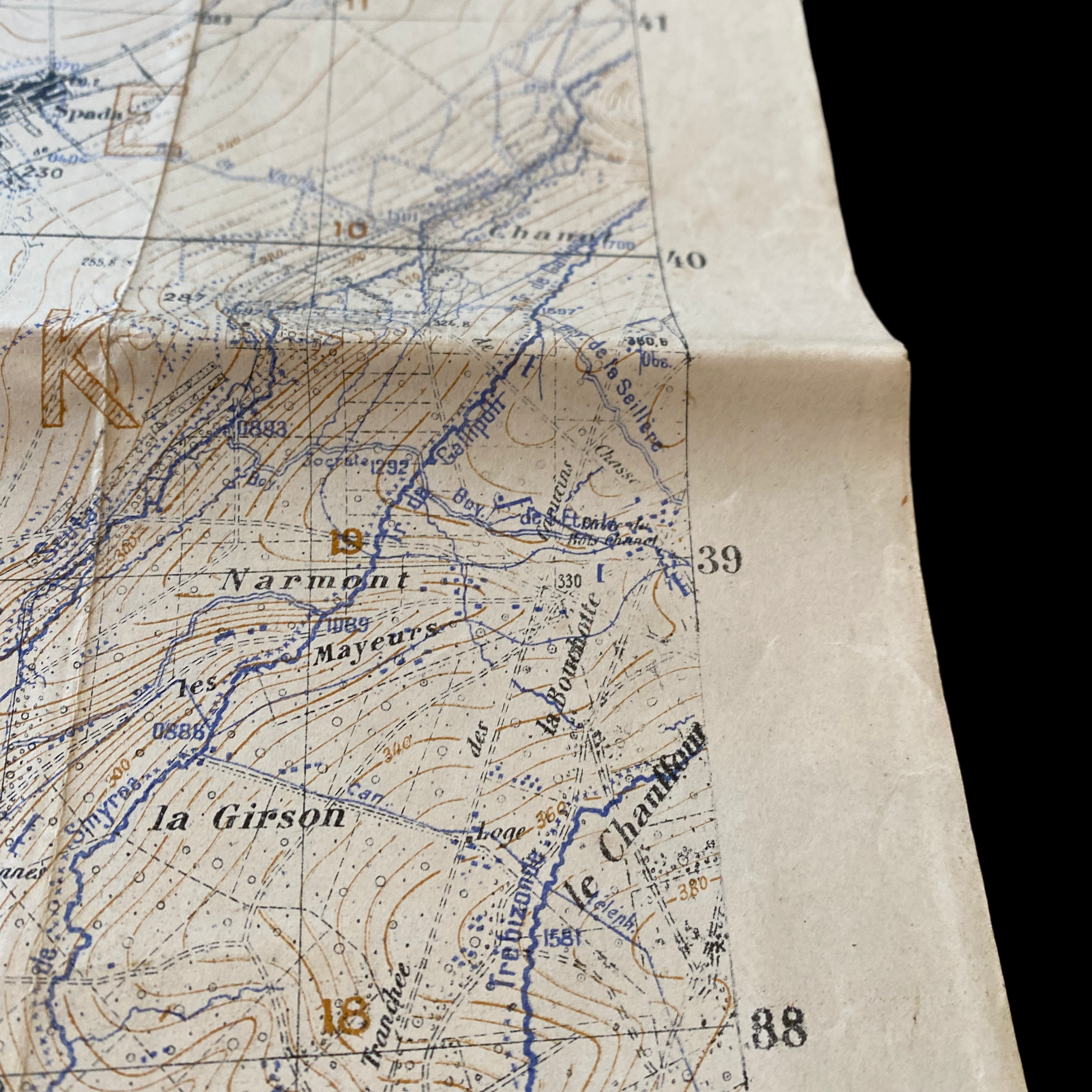
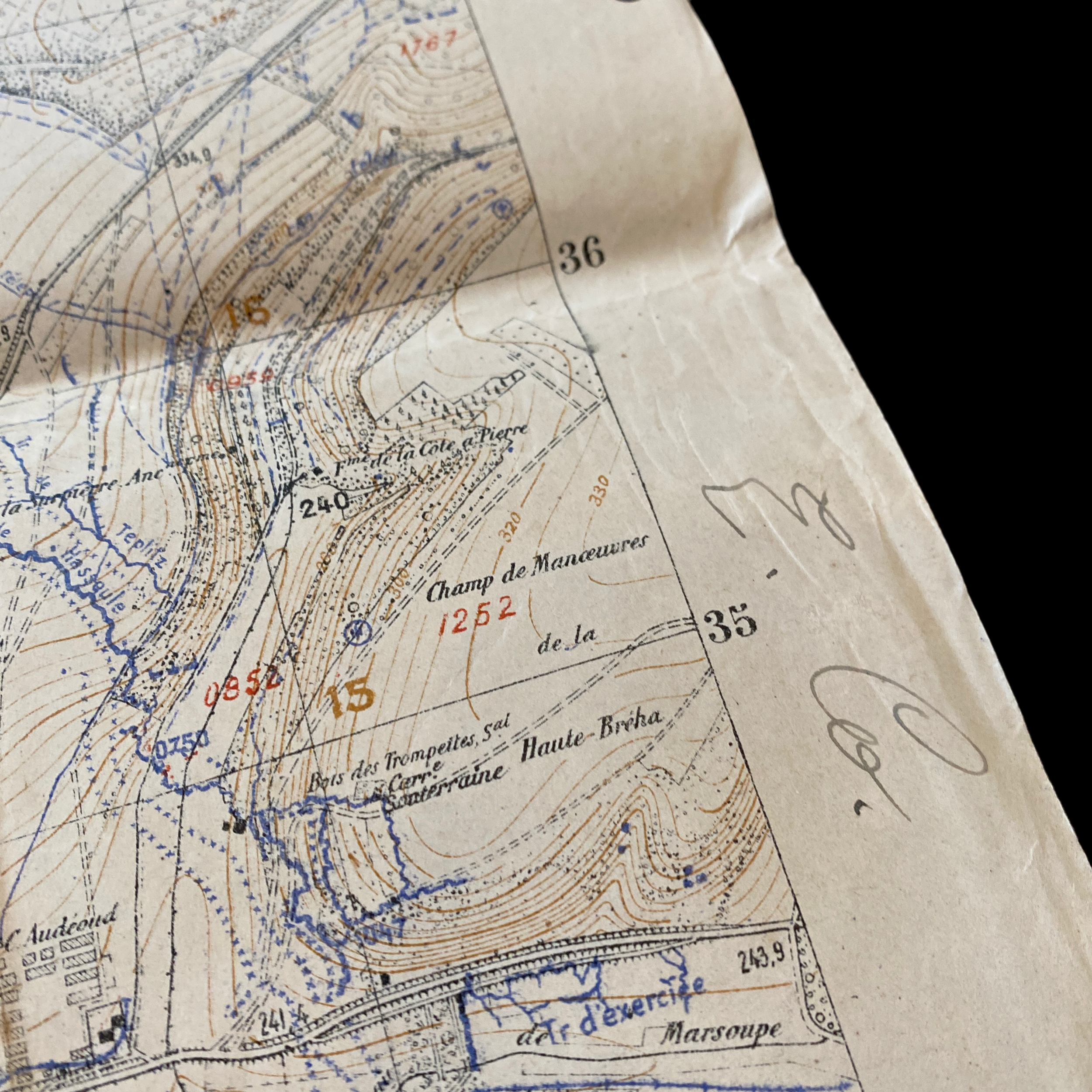

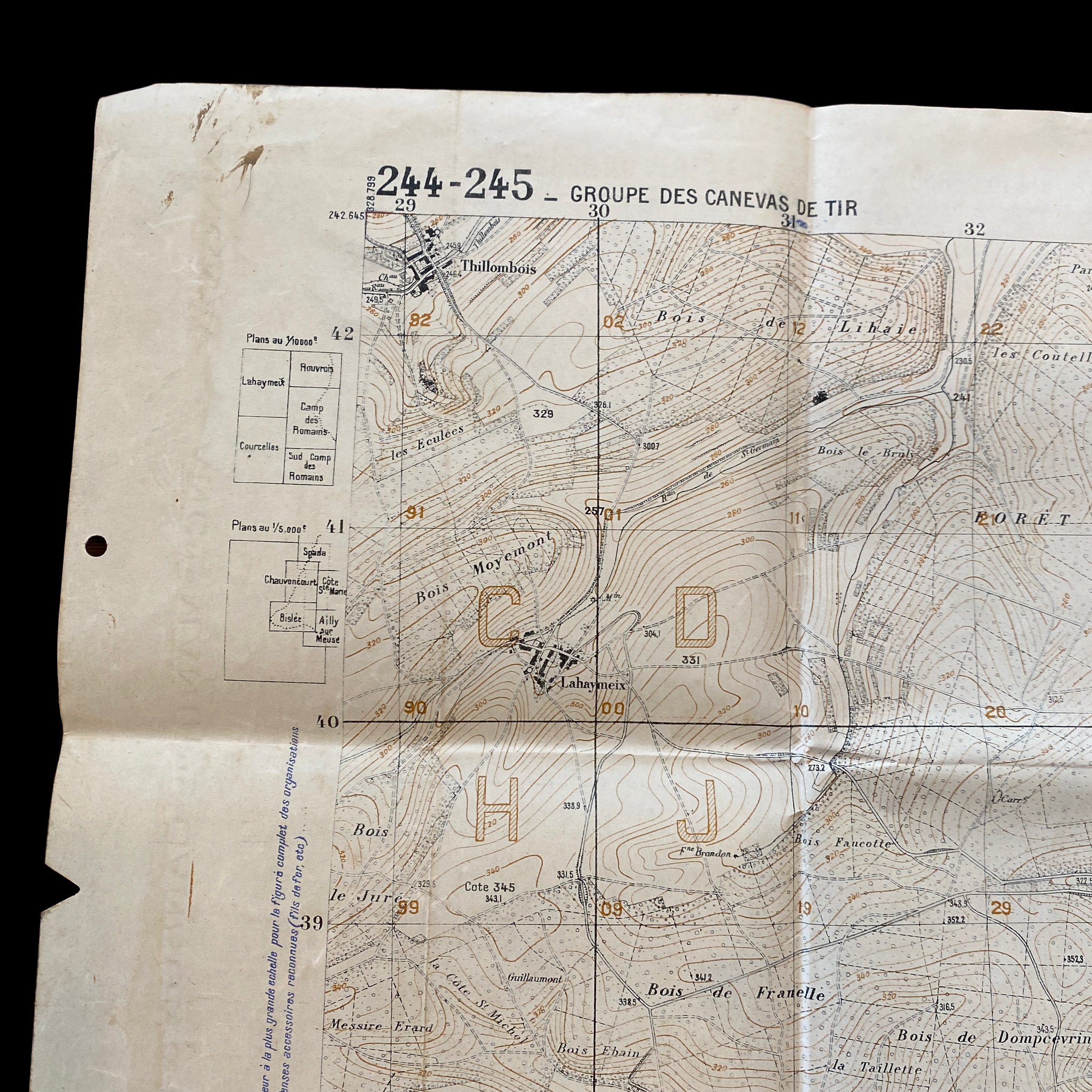
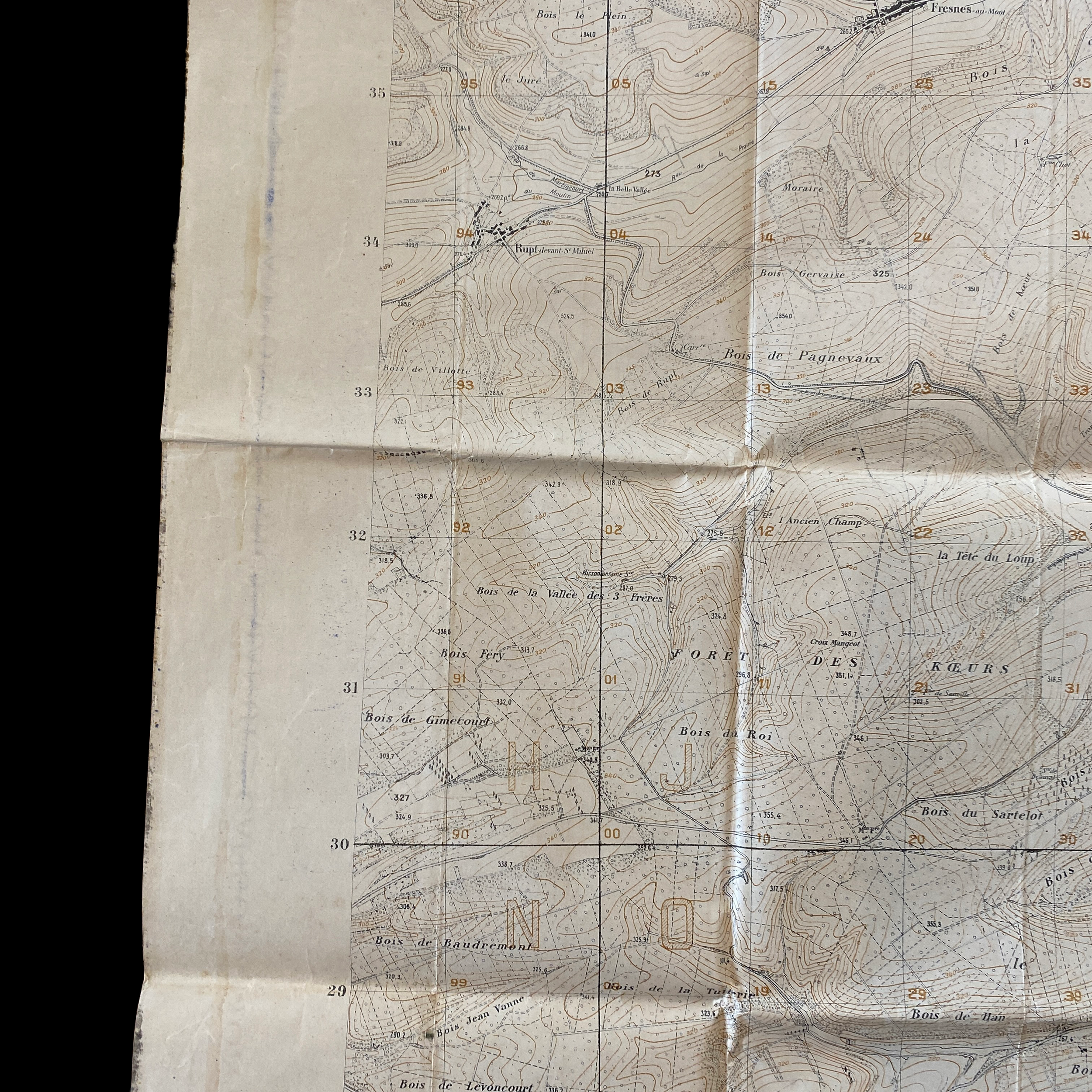
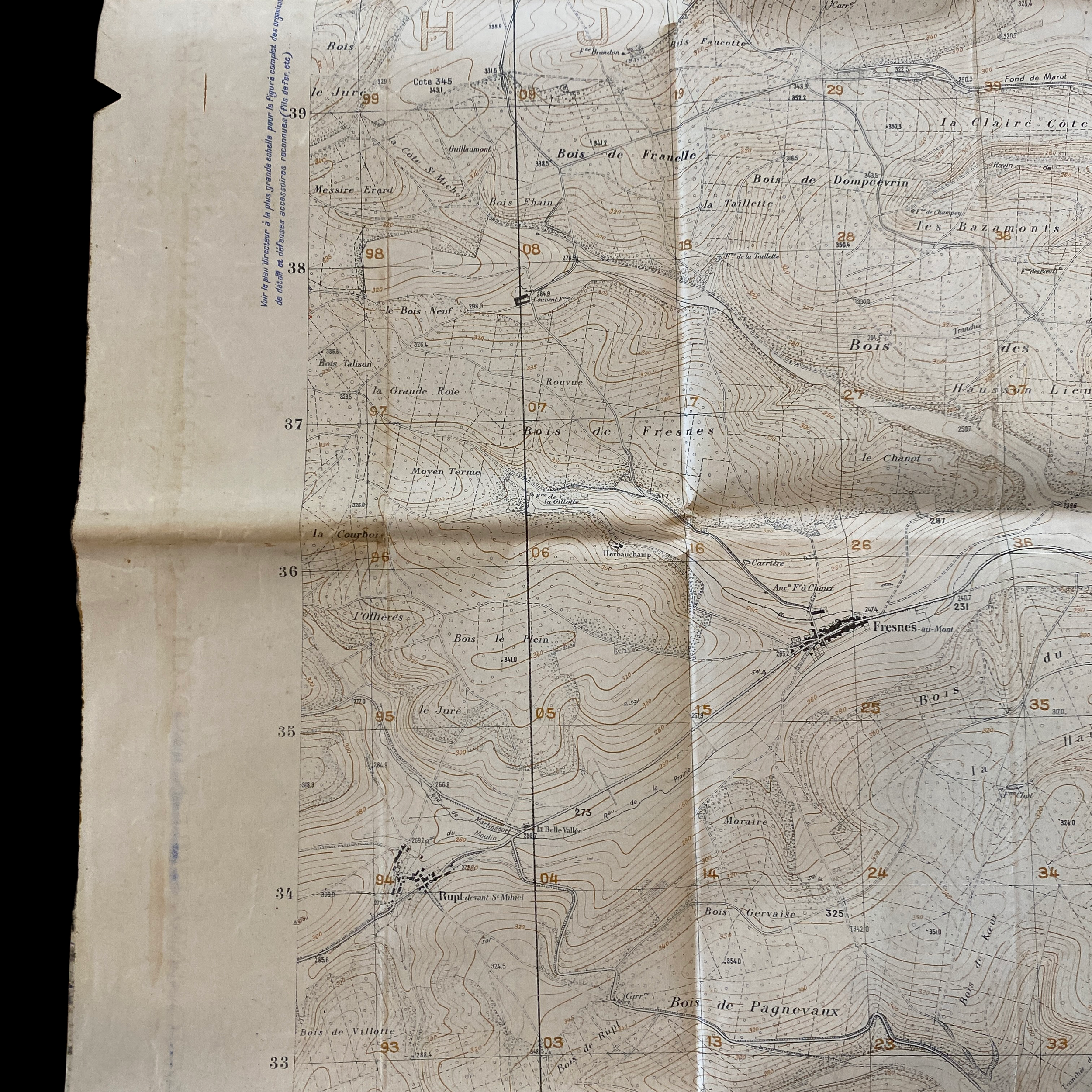
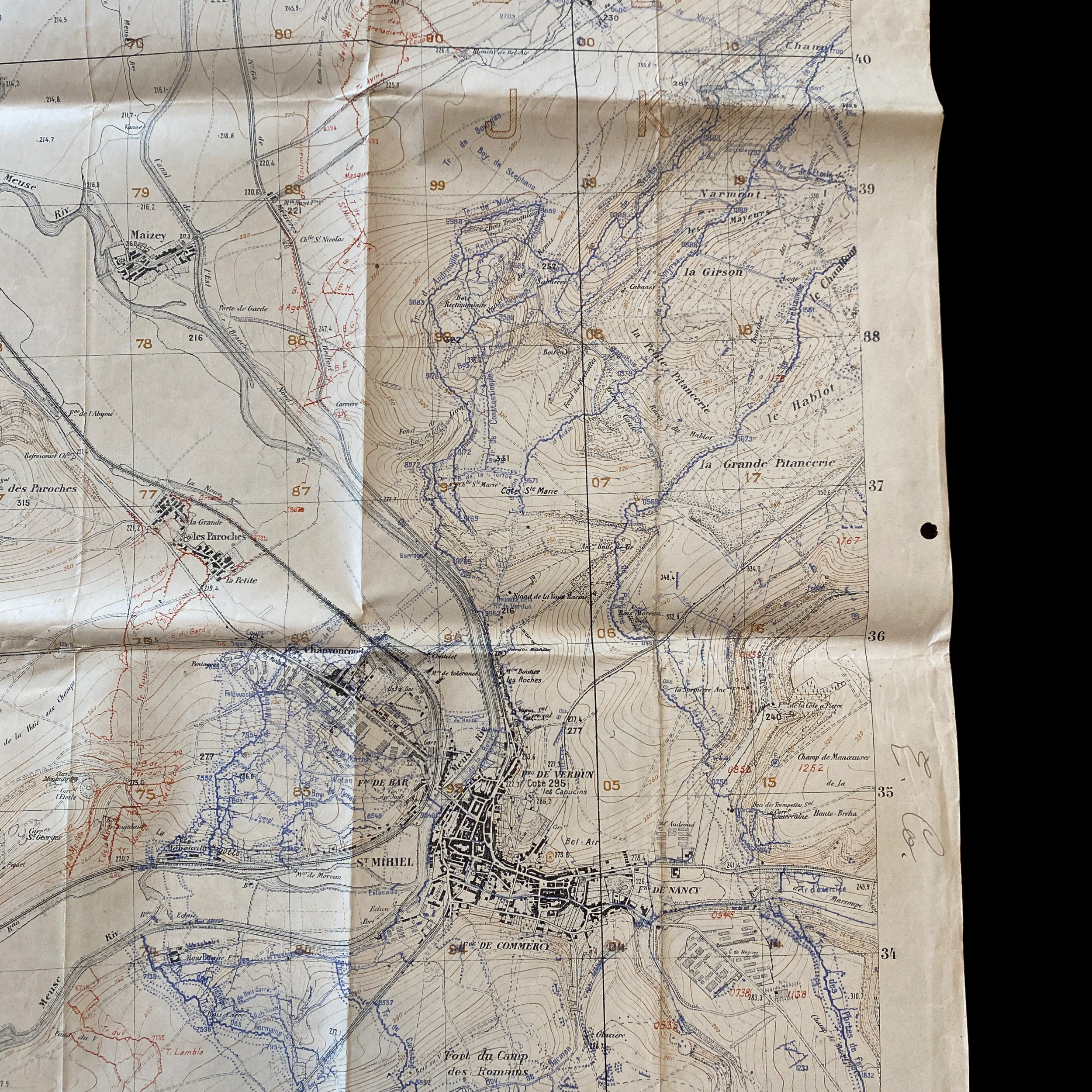
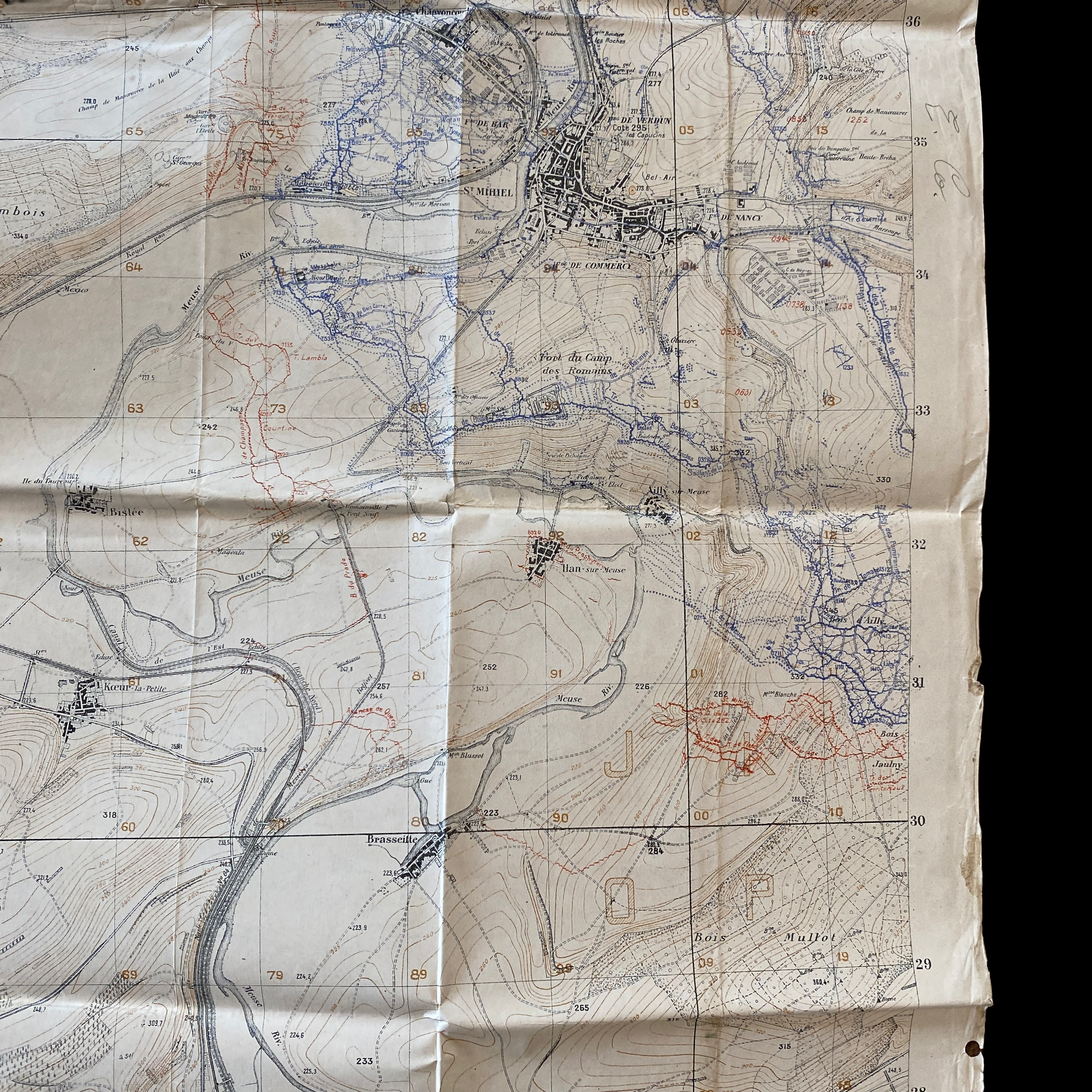
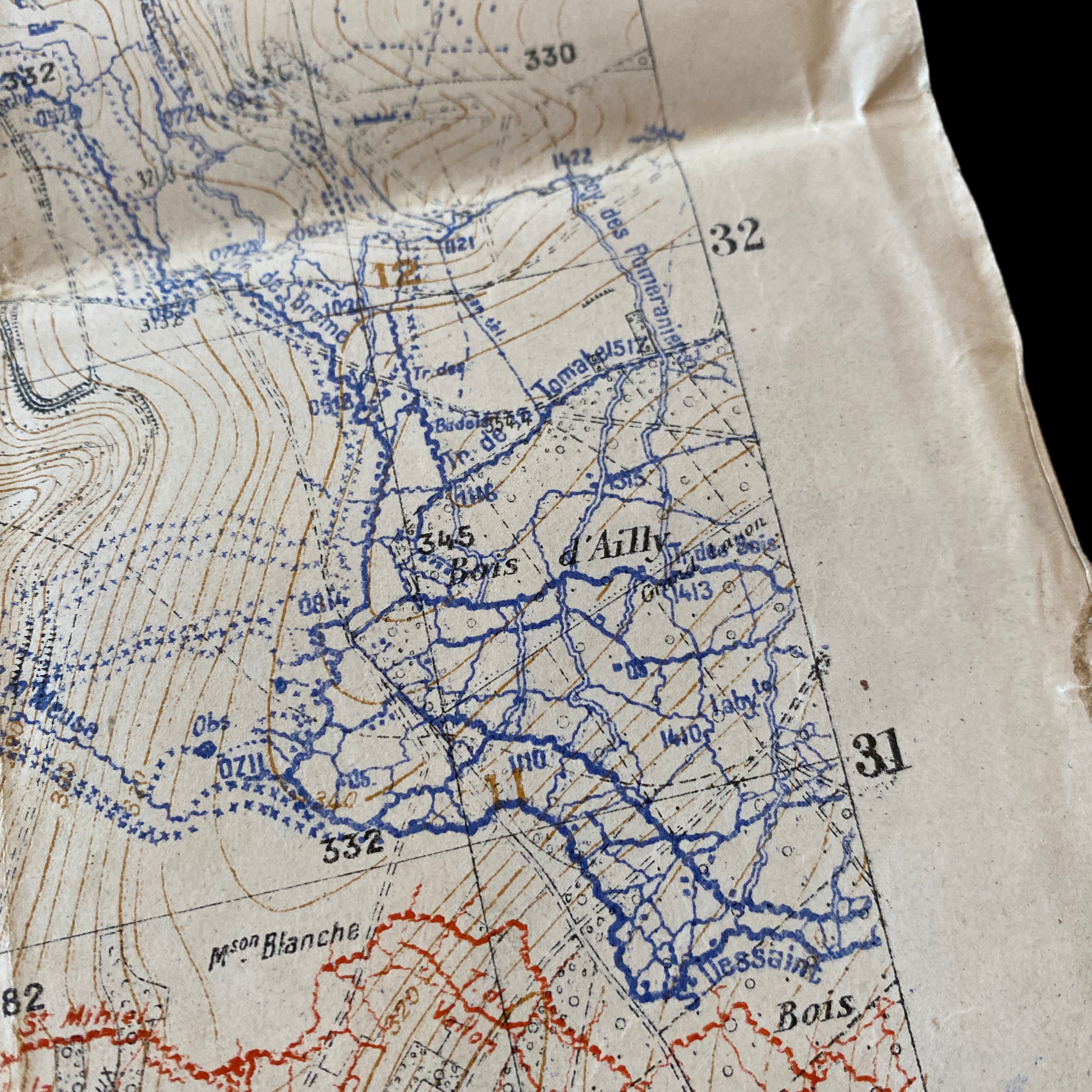

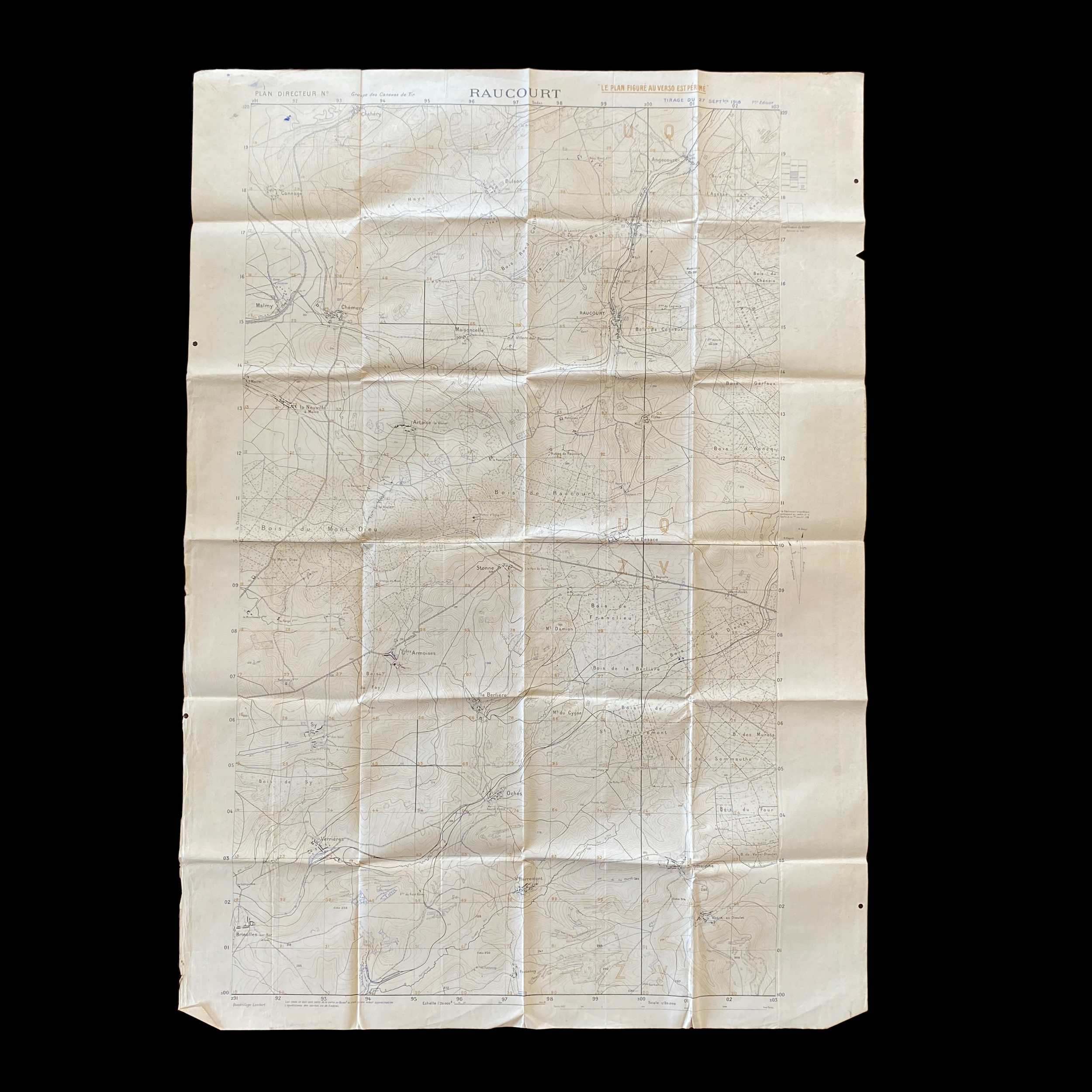
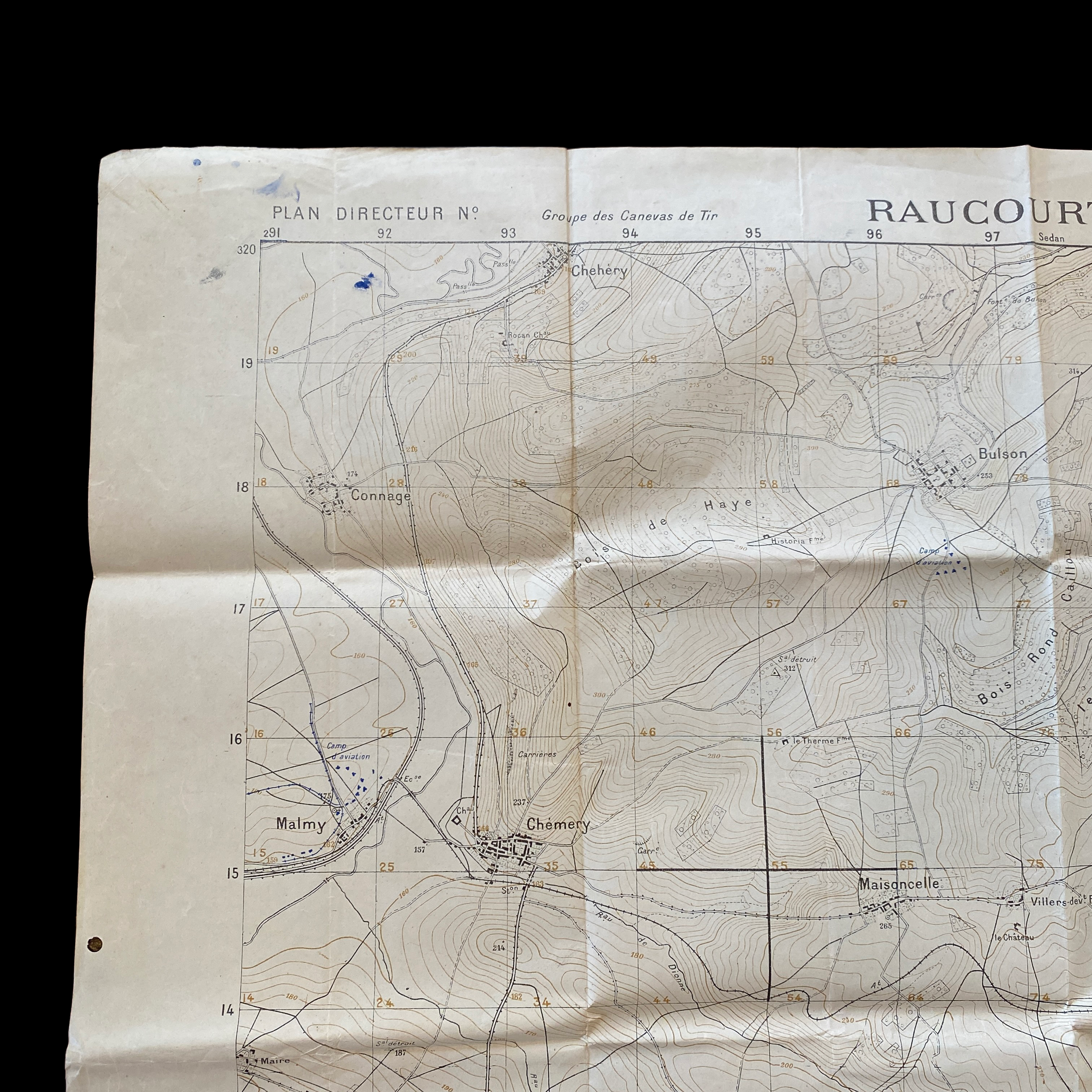
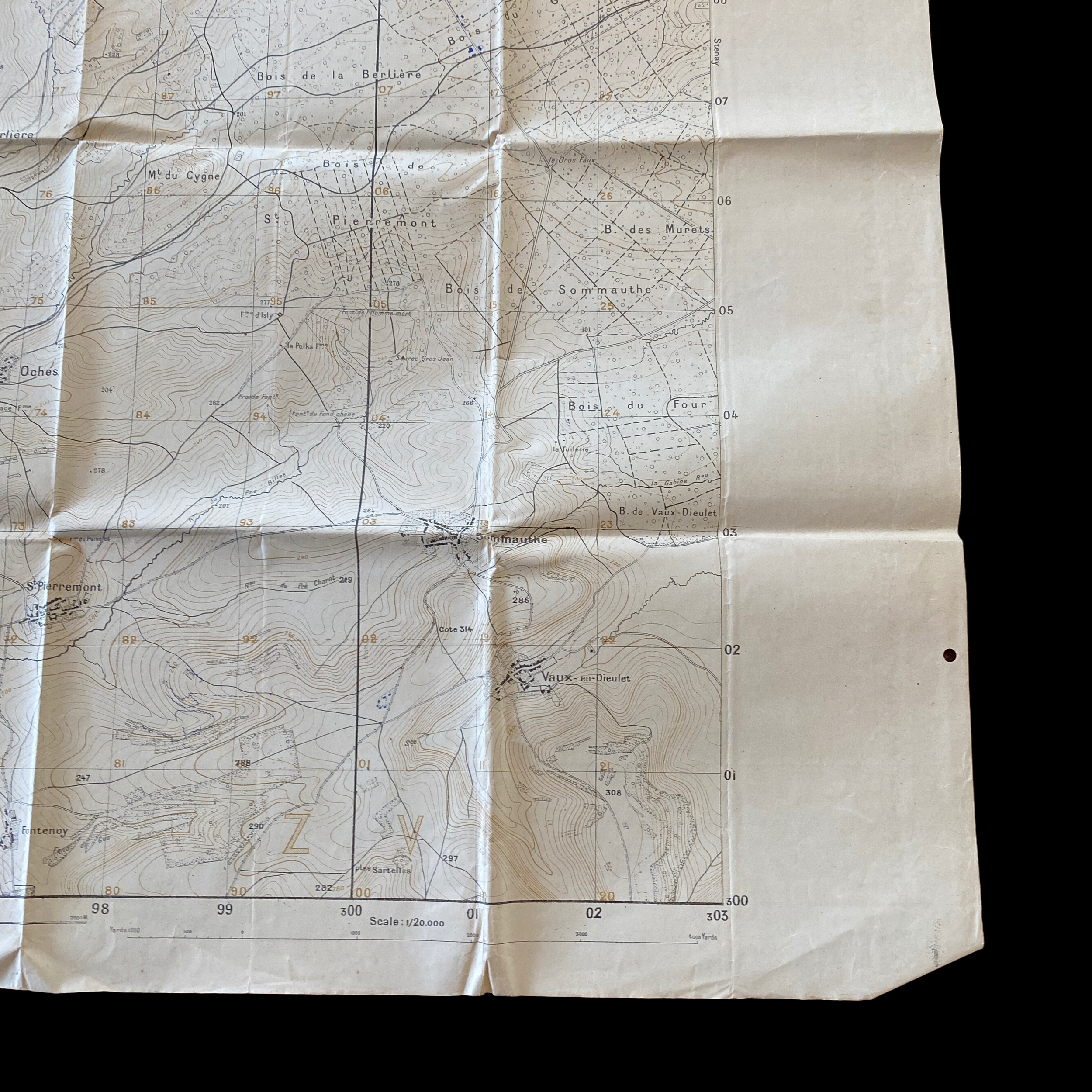
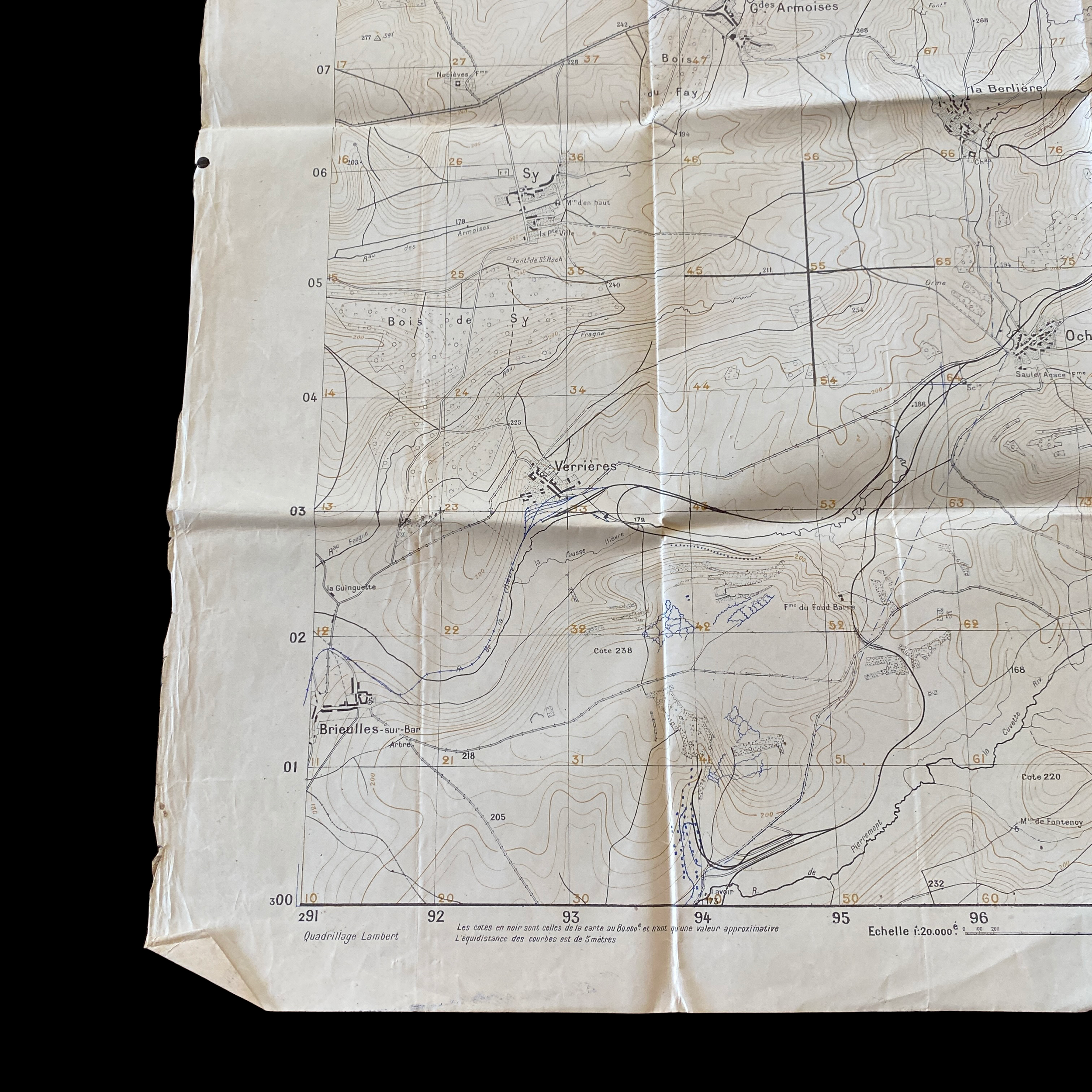
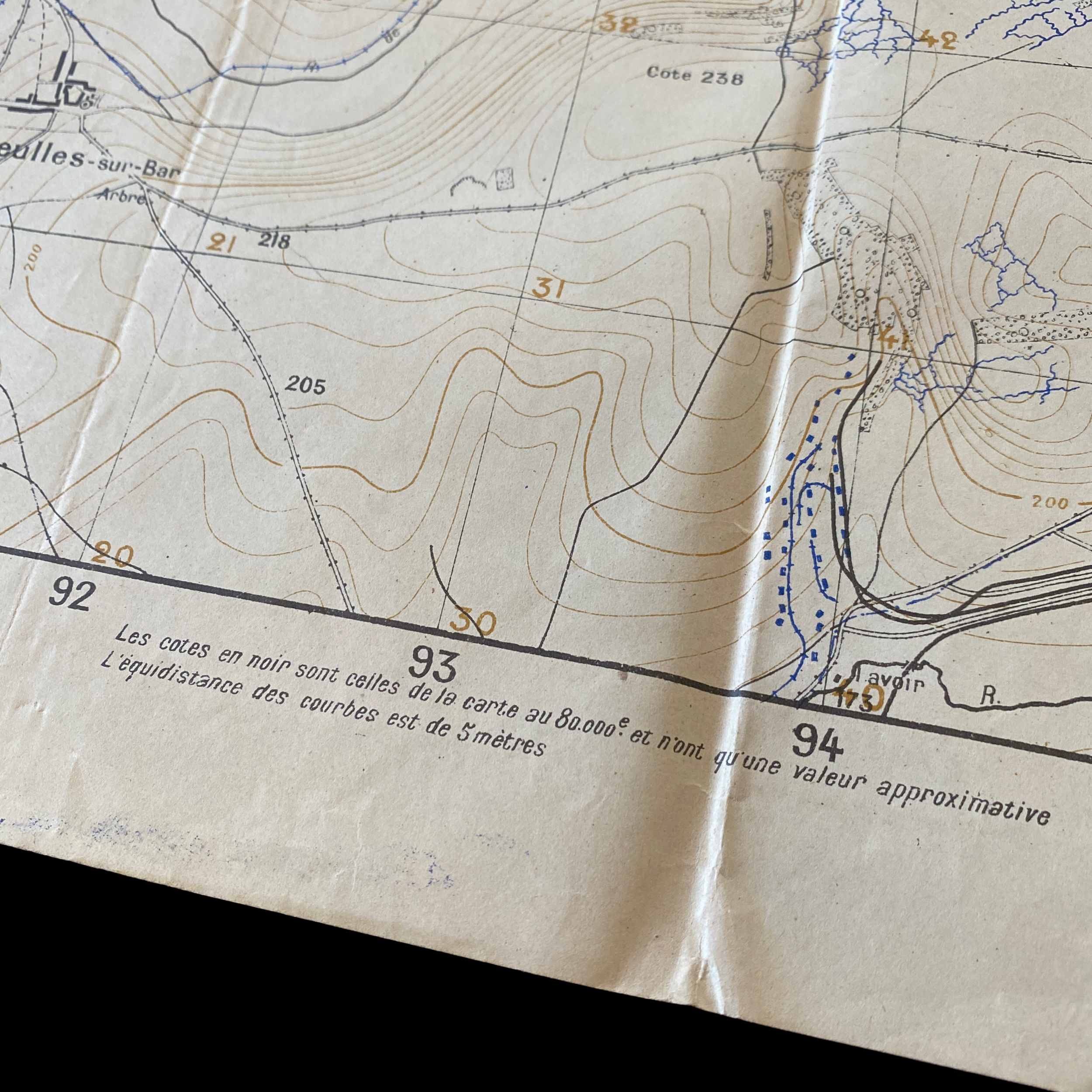
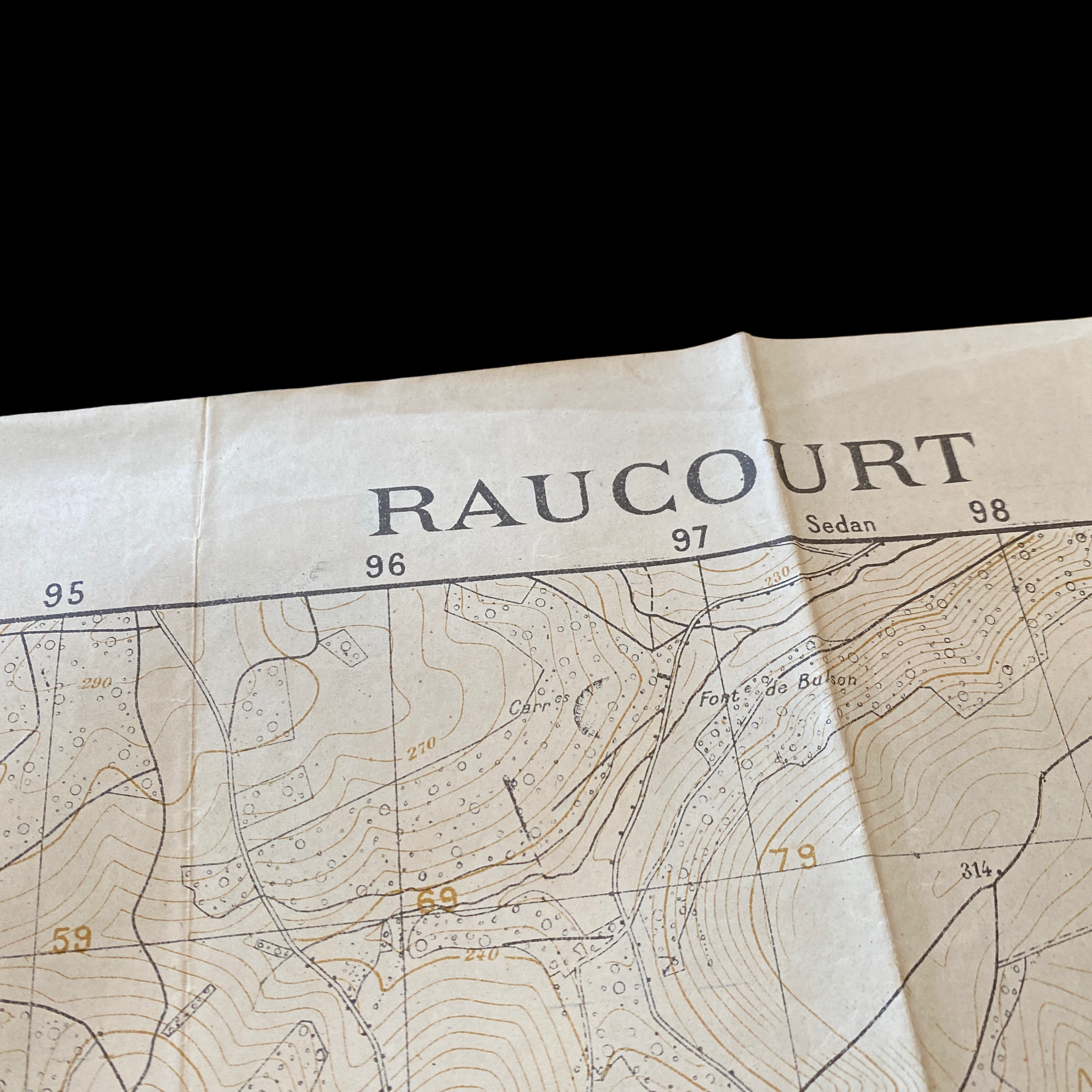

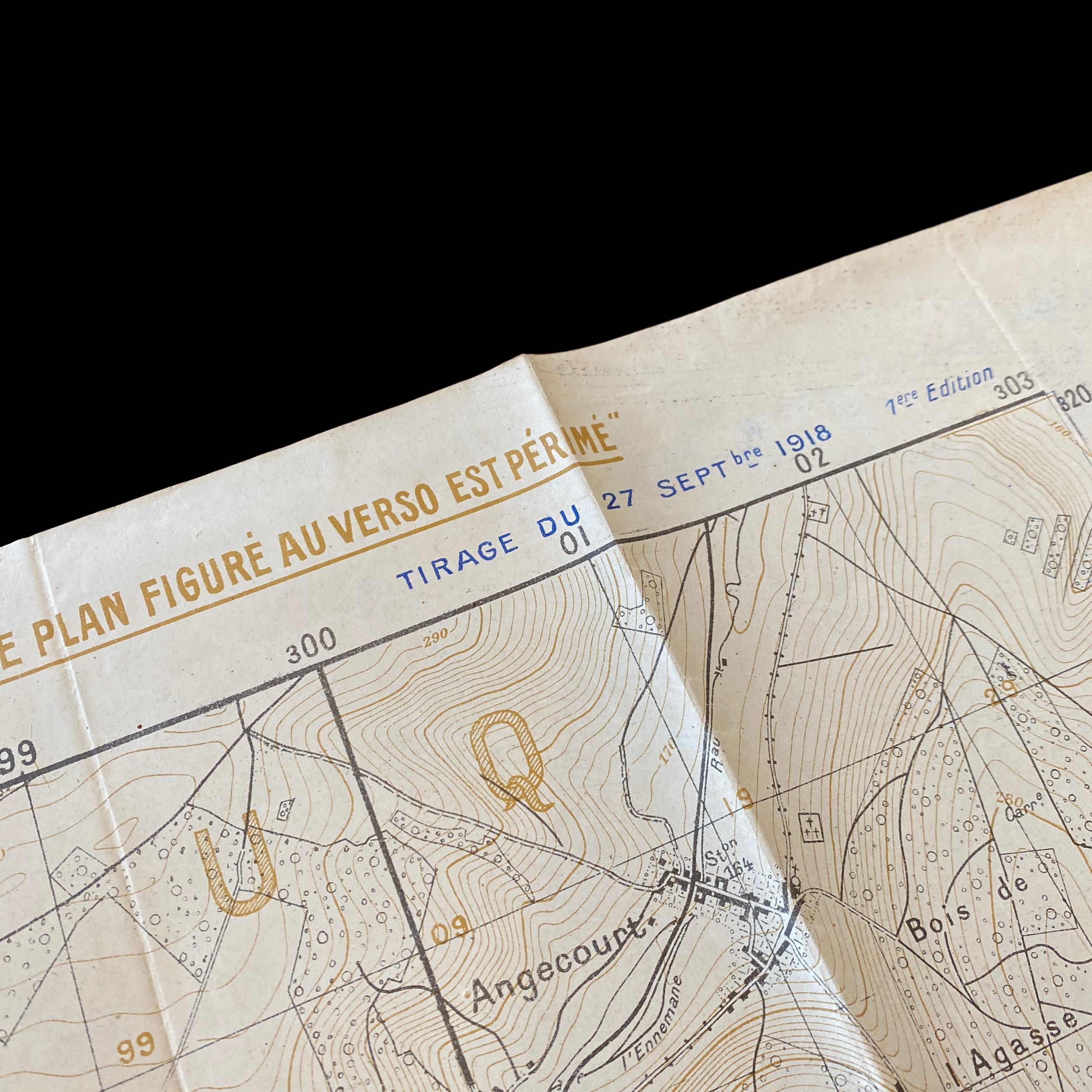
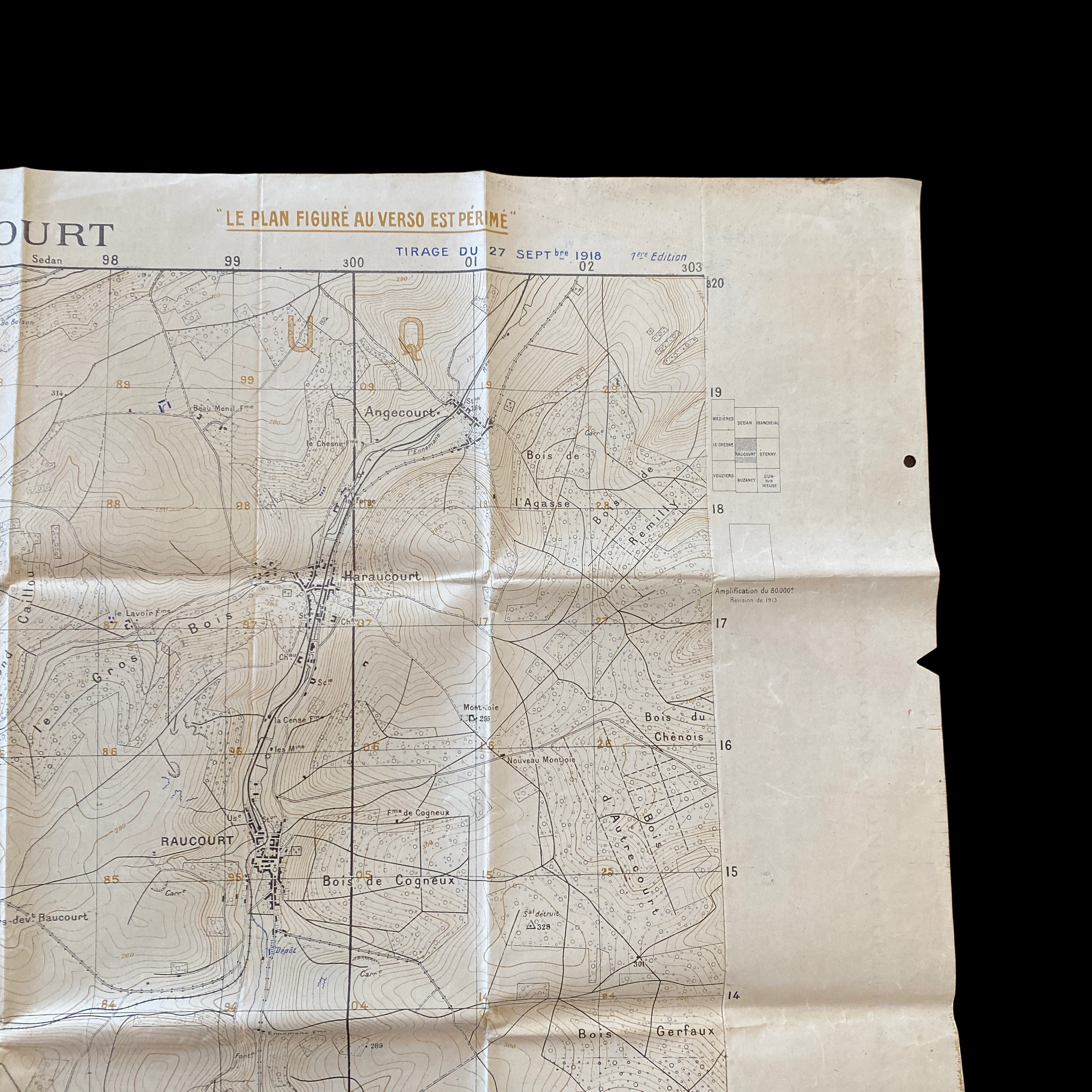
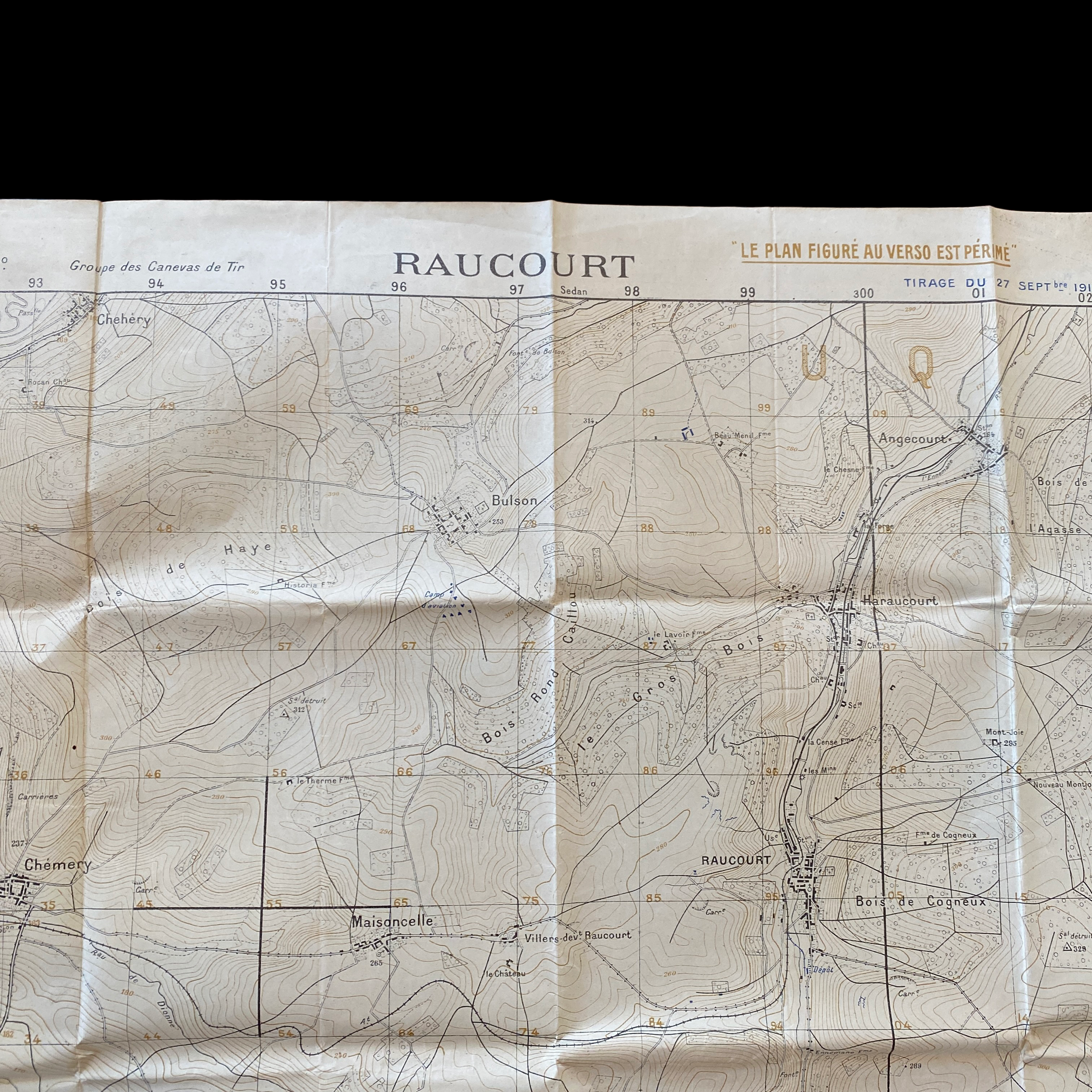
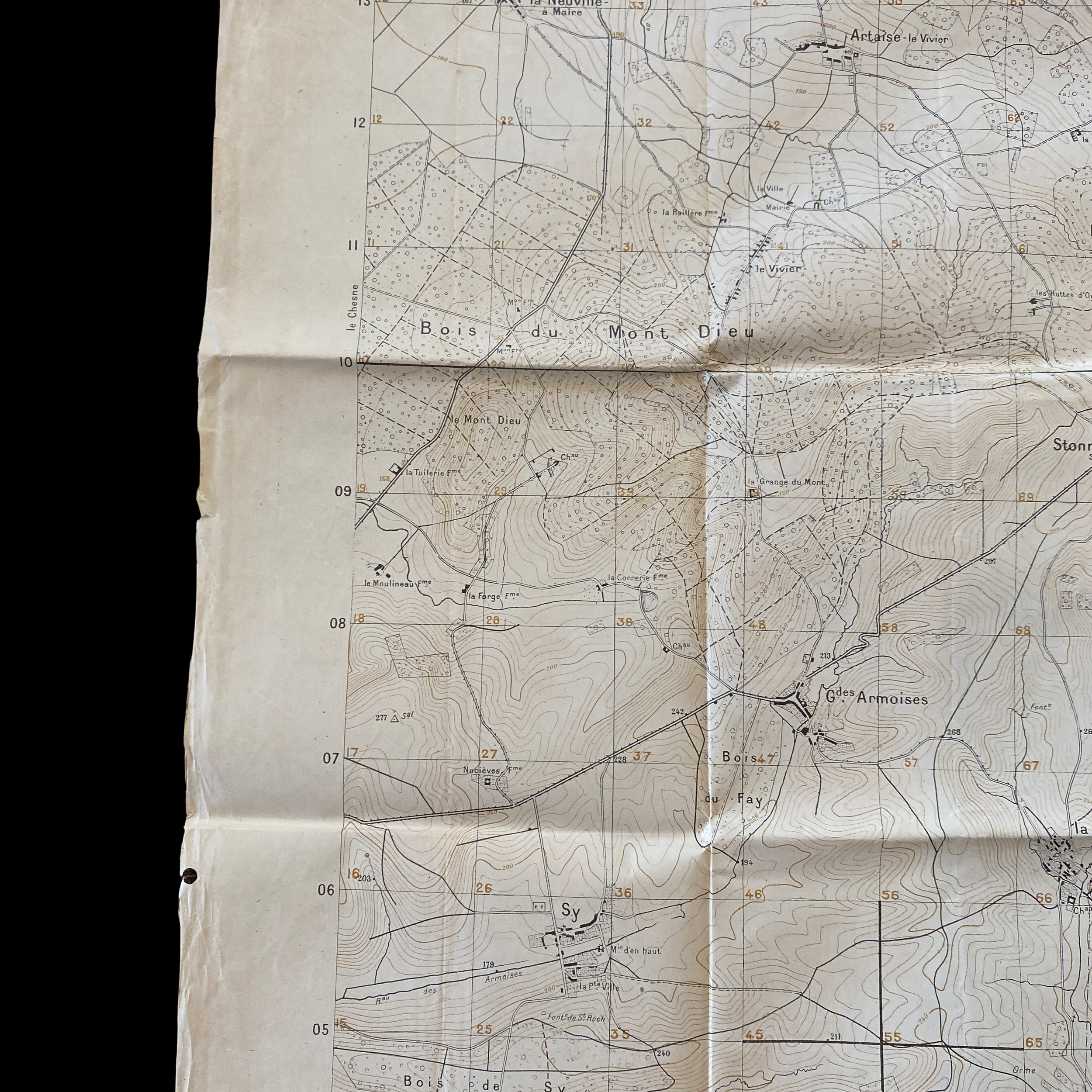
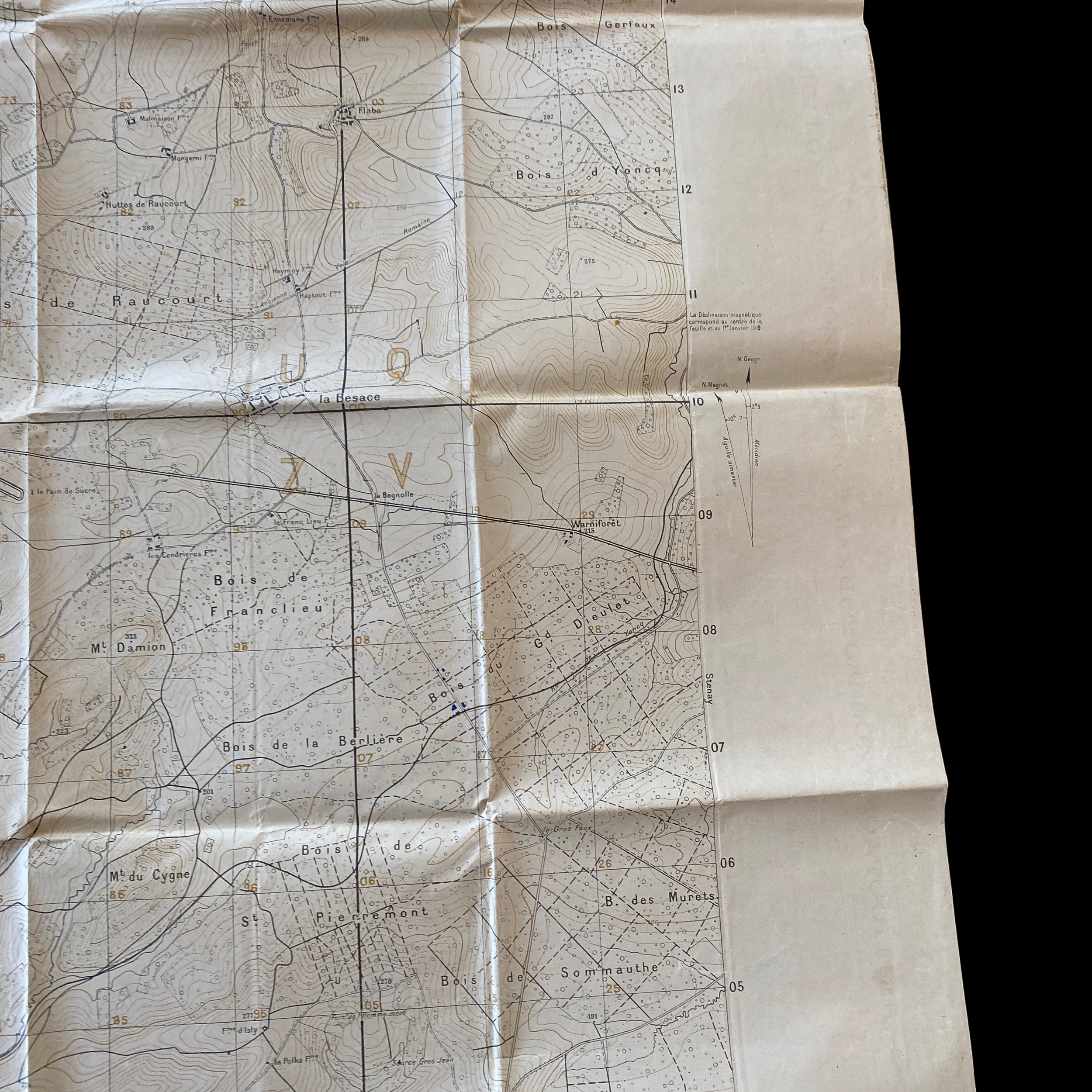
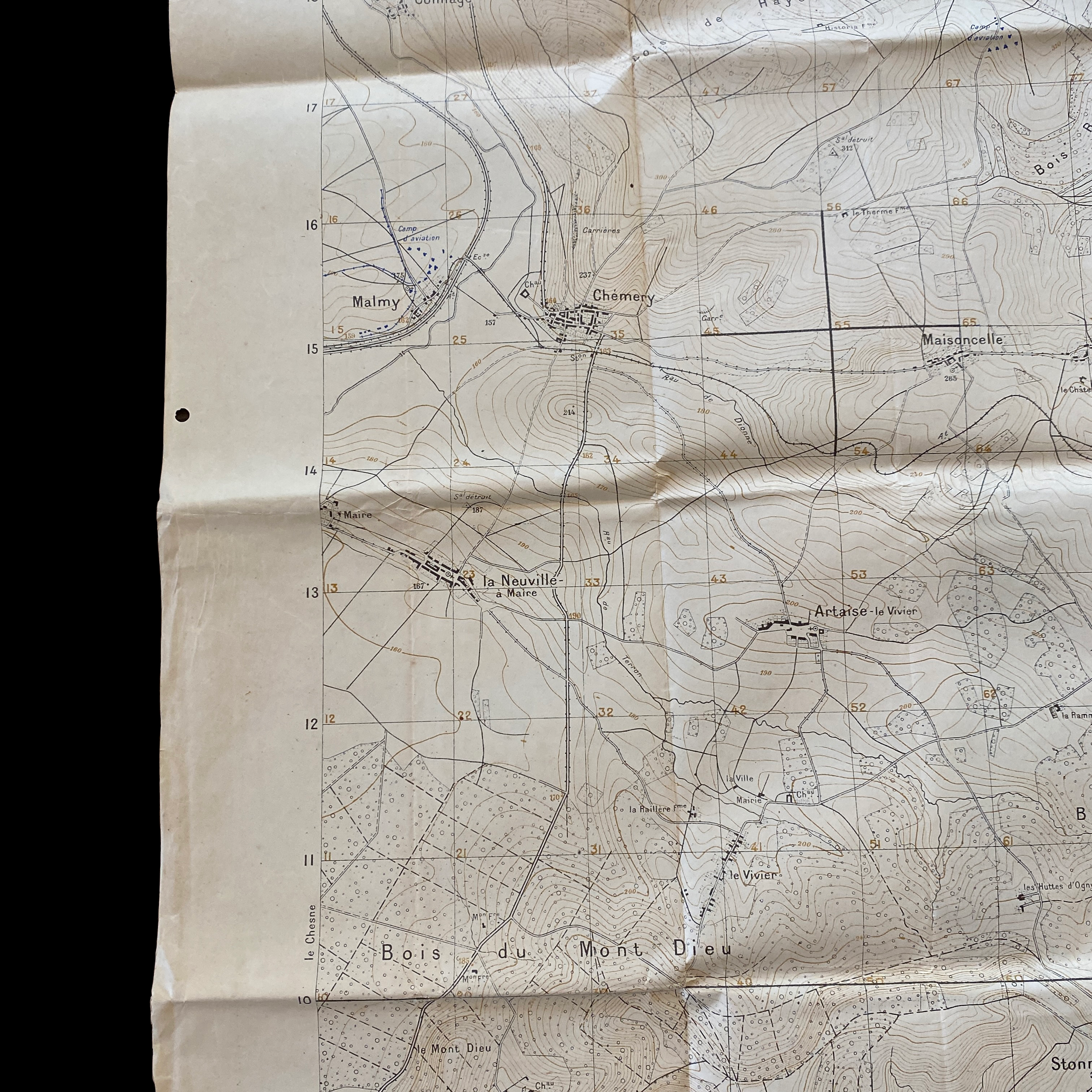

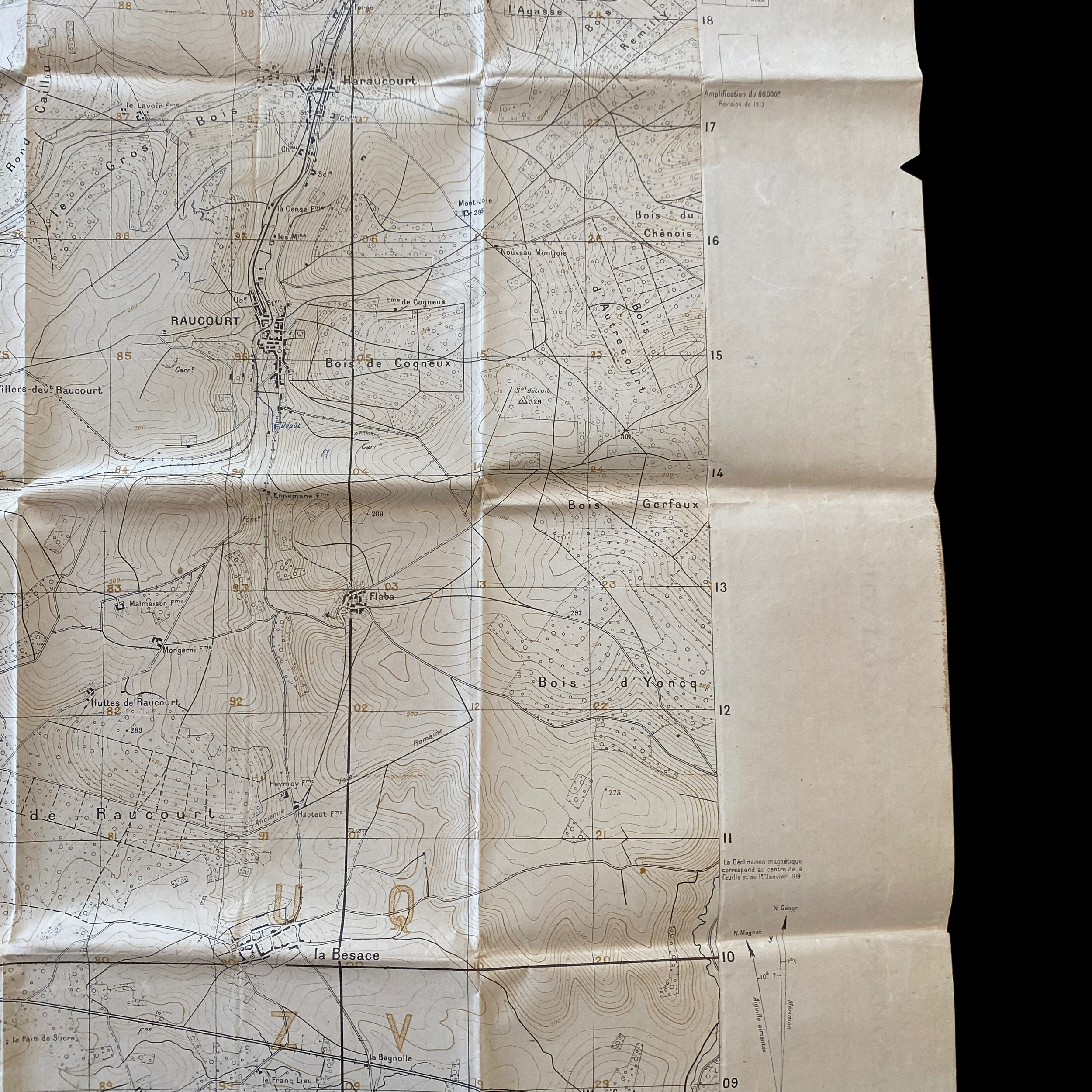
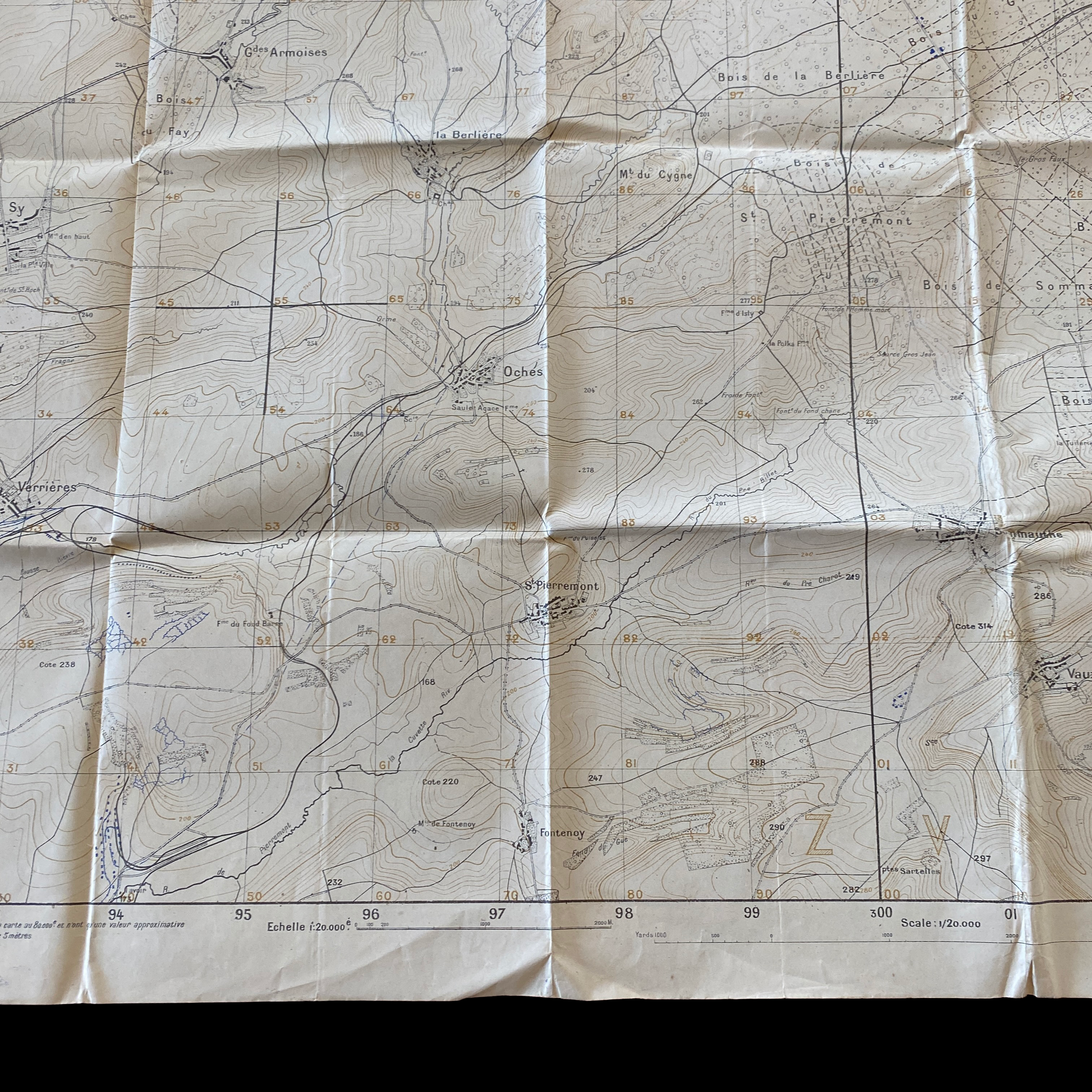
VERY RARE! WWI August 1918 Battle of Saint-Mihiel U.S. First Army "E. Company" A.E.F. Western Front Trench Map
Comes with hand-signed C.O.A.
This incredibly rare and museum-grade WWI A.E.F. trench map is dated August 1918 and was used by the U.S. First Army during the Battle of Saint-Mihiel. This very large operations trench map is an updated 9th edition trench map showing updated trenches as August 1918. This map was used by “E Company” of the U.S. First Army during the American offensive in the Battle of Saint-Mihiel.
The German Armies lines included a salient that included the town of Saint Mihiel. The American Expeditionary Force under the command of General Pershing requested the task of attacking the salient and capturing the town. It was to be the debut of the American 1st Army in combat.
The attack began on September 12th in a coordinated assault from three sides. The allied had overwhelming air superiority with 1,481 planes manning the skies, 40% of the pilots were American. The American forces had a 144 tanks commanded by Major Patton. That was part of larger force of tanks that included over 400 tanks.
The plan was meticulously executed and had caught the German by surprise. They were in the process of withdrawing the salient. By the morning of the second day of the battle, troops advancing from both sides of the salient had met and by the end of the day all of the objectives of the army had been reached.
Allied casualties that day were 7,000 including 4,500 killed. German casualties were 22,500, of those only 2,000 were killed but 10,500 became prisoners. The battle established American Armies reputation as a effective fighting force.
What makes this map even more incredible is that it is double-sided with the trench map of “RAUCOURT” on the opposite side. This was done to preserve paper when doing field prints of newer maps that would aid in the military operations in the region. This adds to the history and was used in multiple regions and battles.
Detailed History of the Battle of Saint-Mihiel:
Battle of Saint-Mihiel, (12–16 September 1918), Allied victory and the first U.S.-led offensive in World War I. The Allied attack against the Saint-Mihiel salient provided the Americans with an opportunity to use their forces on the Western Front en masse. Although lacking some of the tactical skills of the French and British, the U.S. First Army carried the day through sheer determination and its multifaceted plan of attack. The battle was also noteworthy as the first major use in the war of the U.S. Army Air Service (precursor to the U.S. Air Force) led by William "Billy" Mitchell and the aggressive tank assaults by George Patton, who boldly led his charges from the front lines and not from the rear as many other officers did during the war.
The American commander-in-chief in France, General John Pershing, had, in the main, fought off attempts to use his divisions piecemeal in support of French and British operations, preferring to hold them back to form a separate U.S. army. The attack on the Saint-Mihiel salient on 12 September gave him the opportunity to use the U.S. First Army in combat for the first time. The American part of the assault was to be conducted by two "super" corps, each with three divisions in attack and one in reserve. Two smaller French corps would provide support on the western part of the salient.
General Erich von Ludendorff—now short of men and aware of the coming Allied offensive—had decided to withdraw from the salient to a shorter and more easily defended line to the rear. As the Germans were withdrawing, the Allies attacked. With much of their artillery not in place, the Germans were poorly prepared to maintain the front line, an advantage that the attacking Americans were quick to exploit. The relative ease of the initial American attack came as a surprise to Pershing, and he sent orders to his commanders to speed up their advance. By 13 September lead units of the U.S. First Army had met up with Allied troops advancing from the west. Three days later, the offensive was halted, with the salient in Allied hands. Pershing now dispatched his forces westward to take part in the forthcoming Meuse-Argonne offensive.